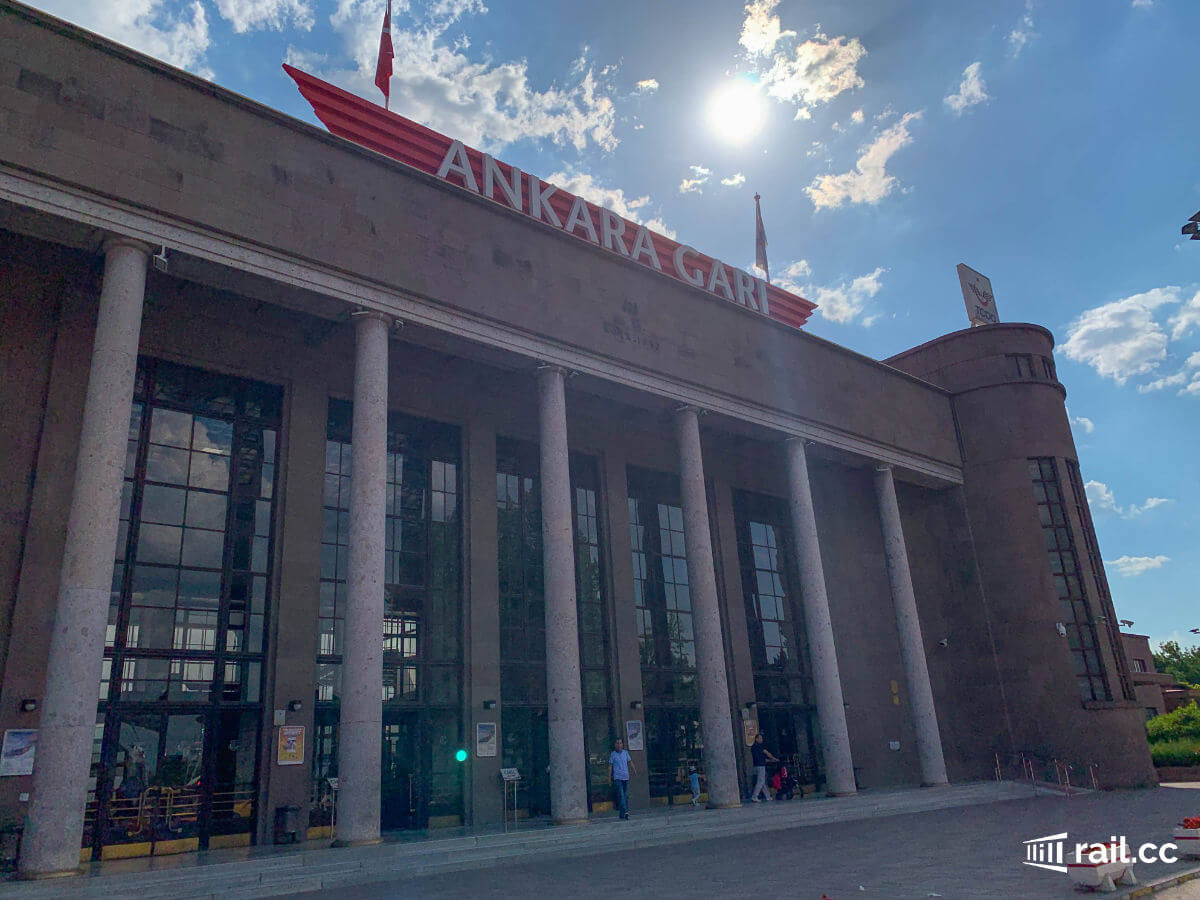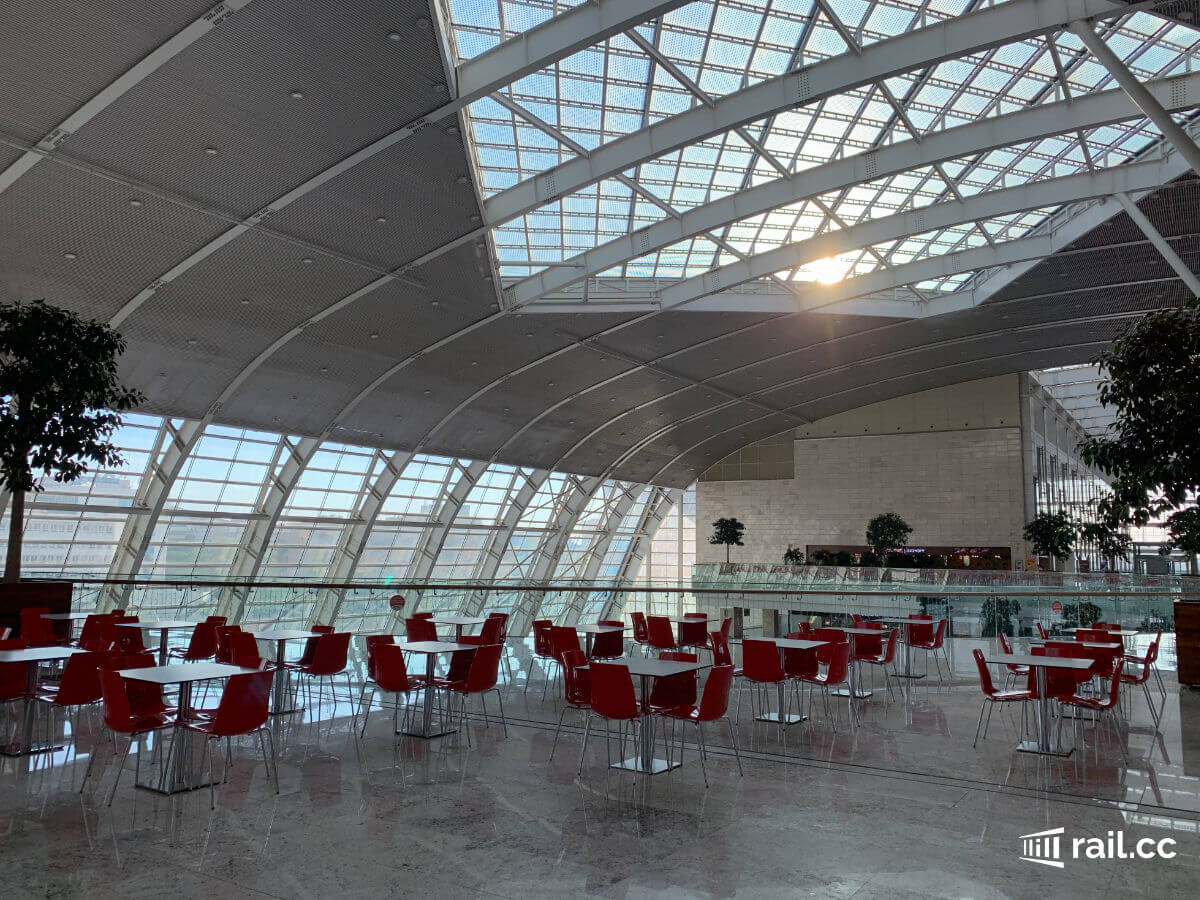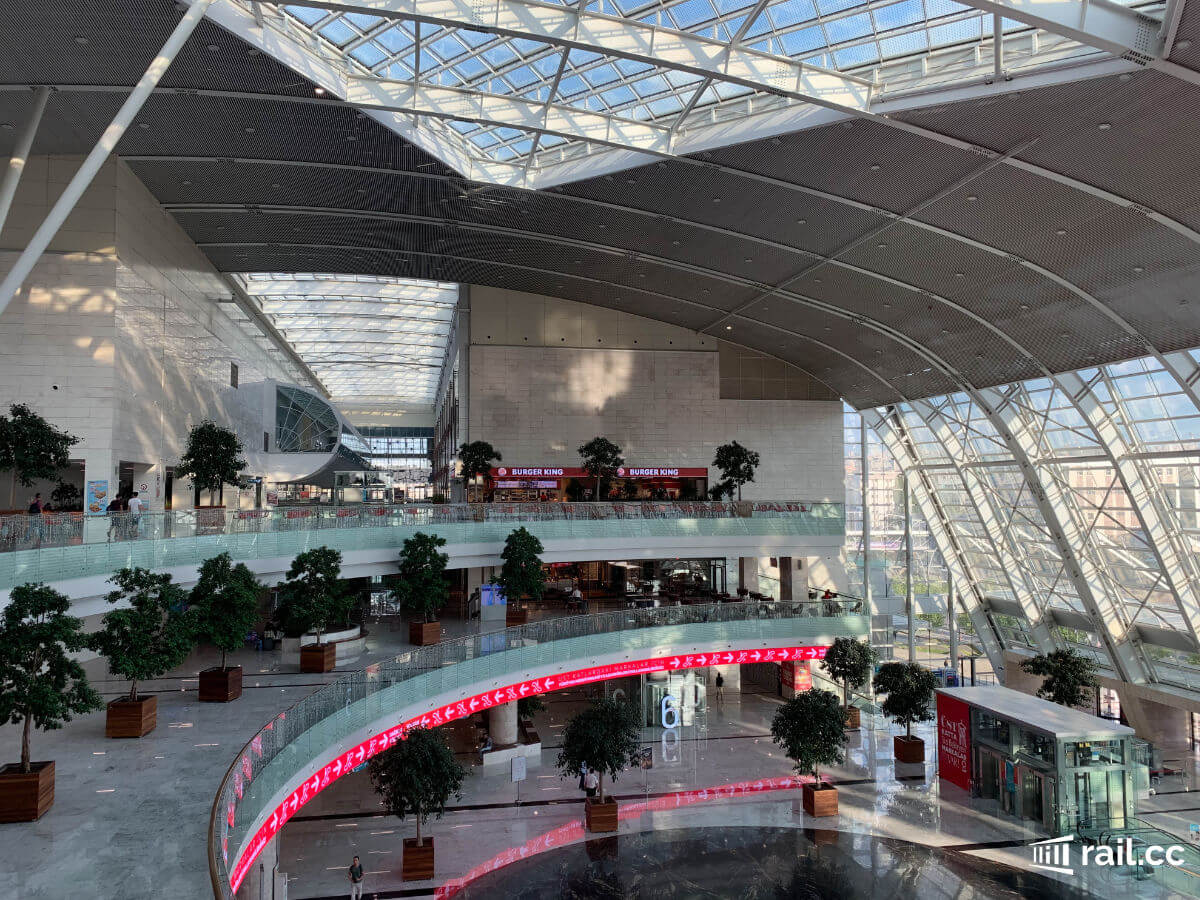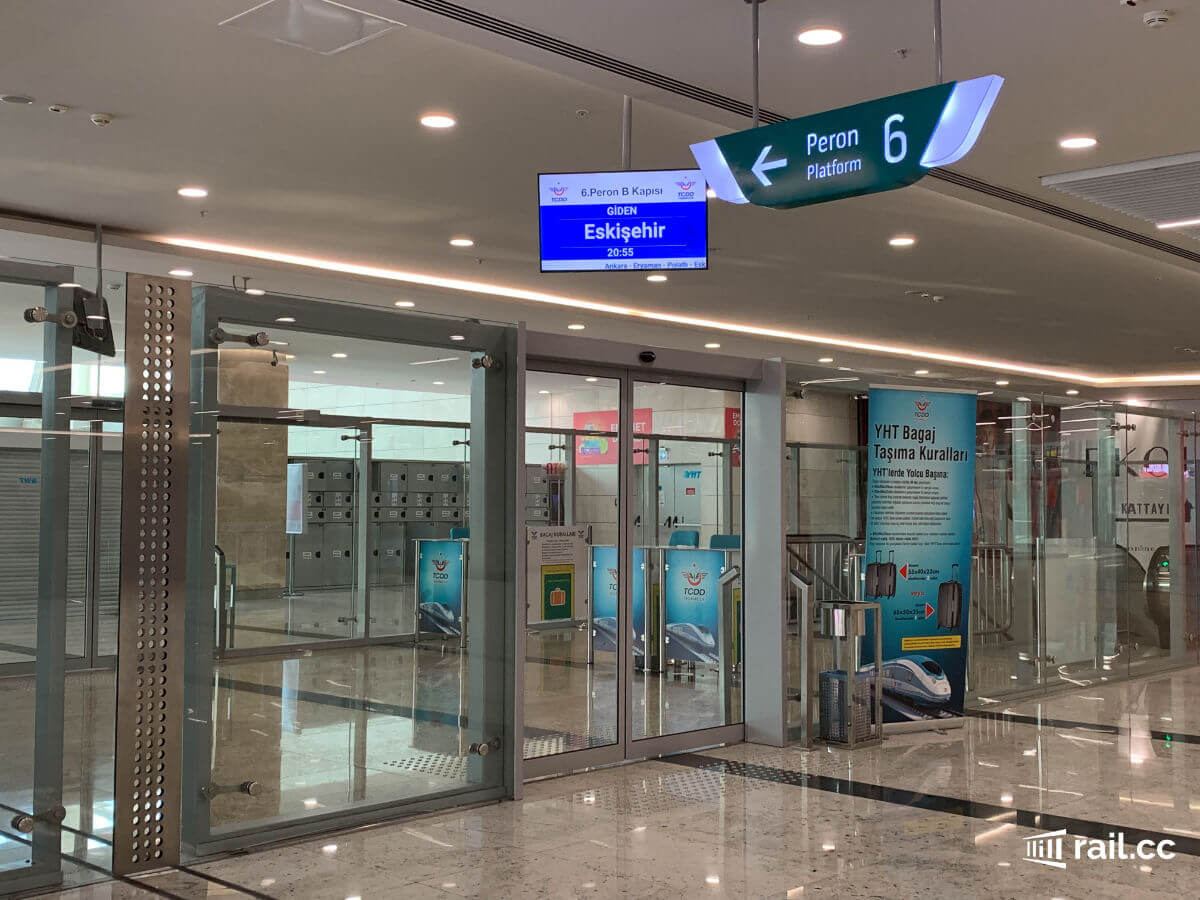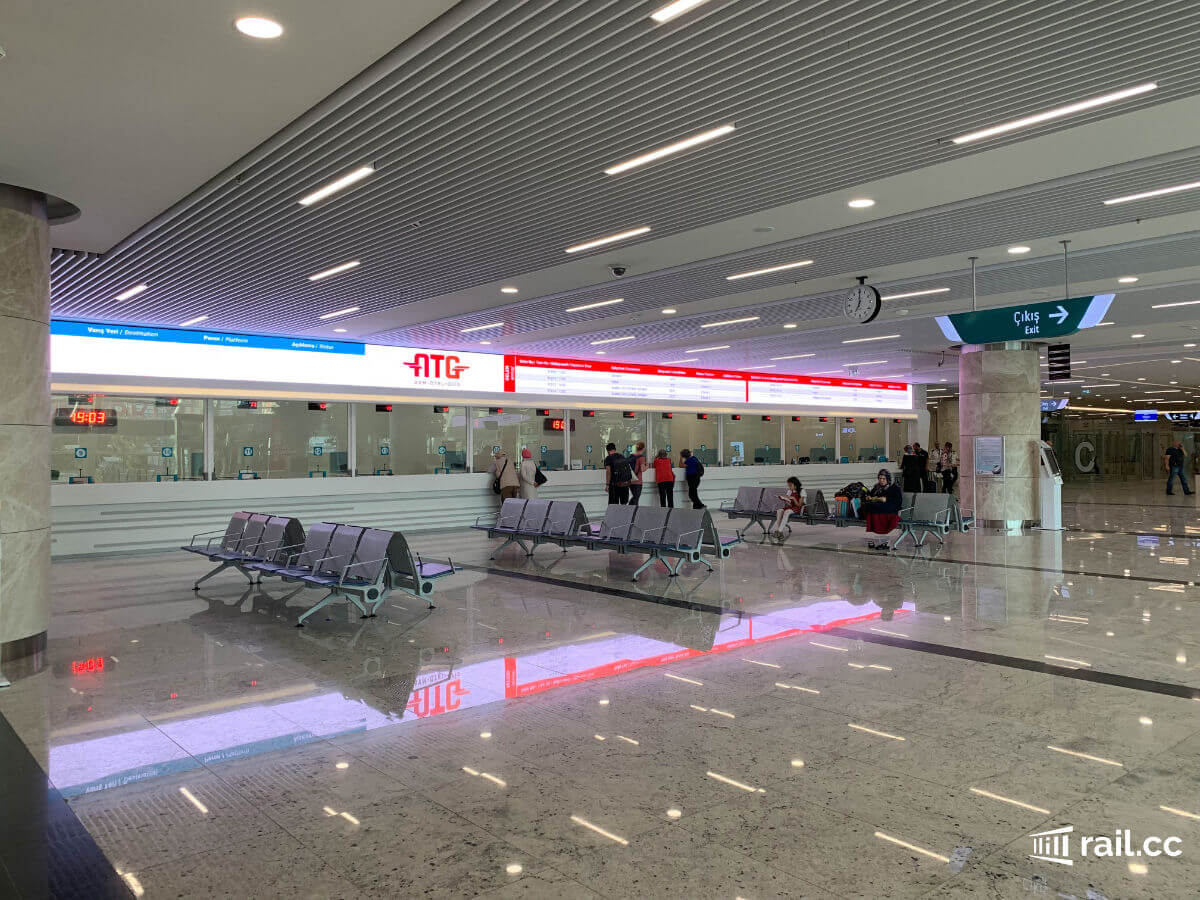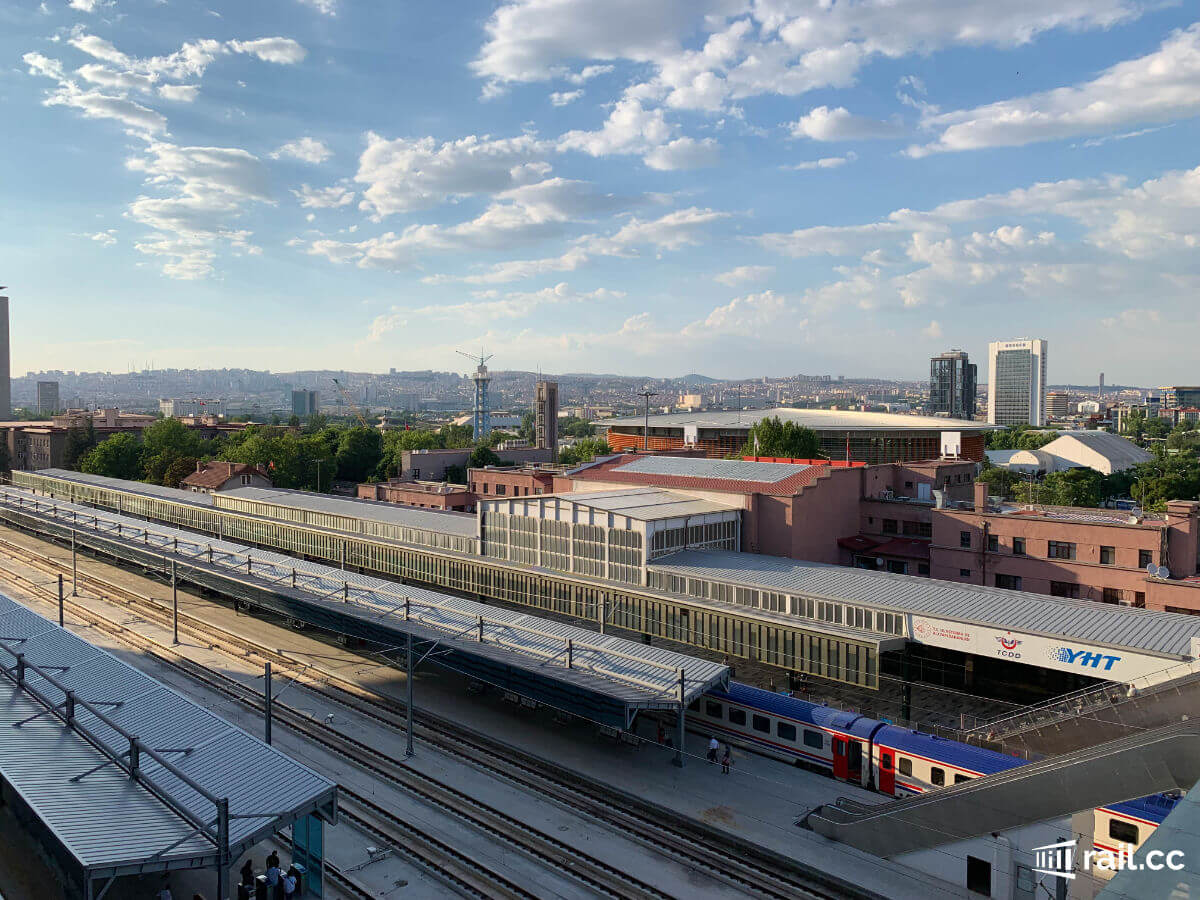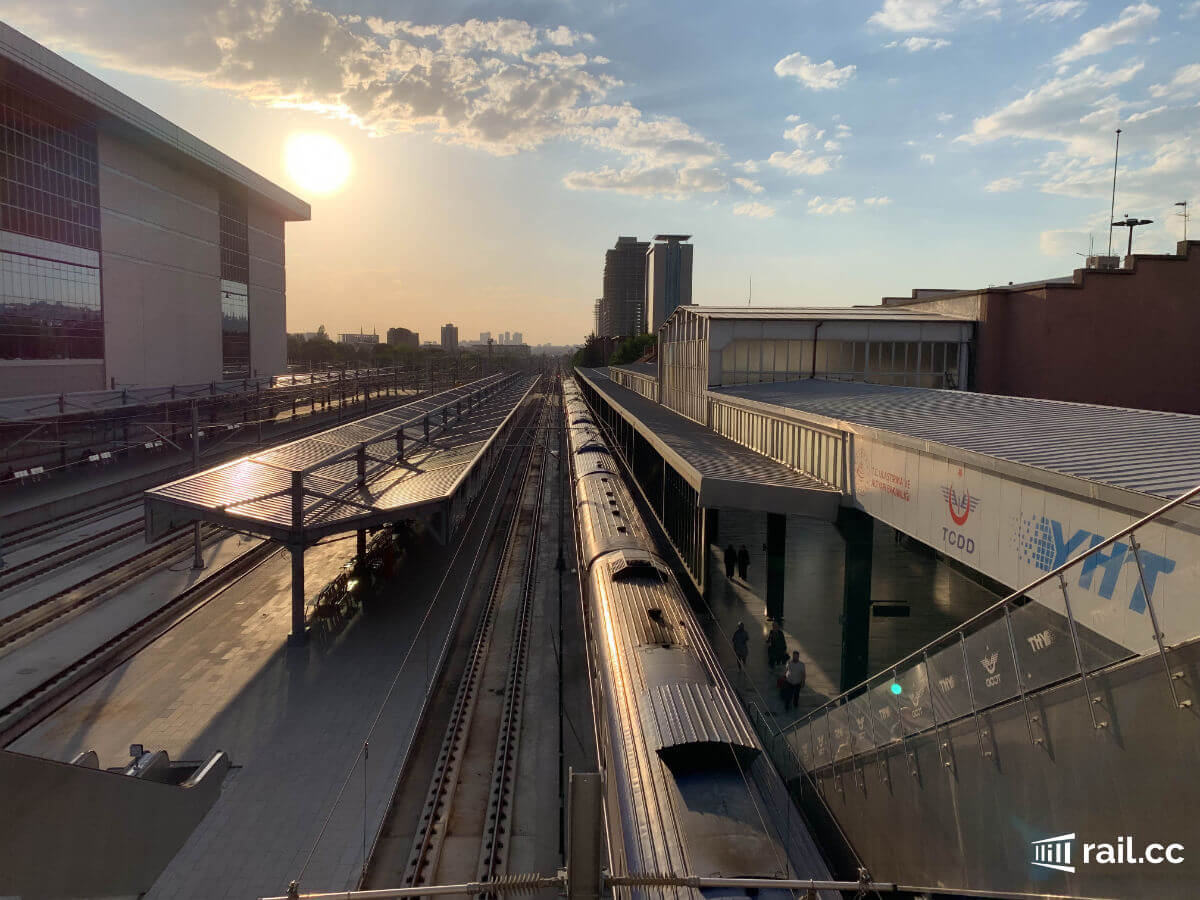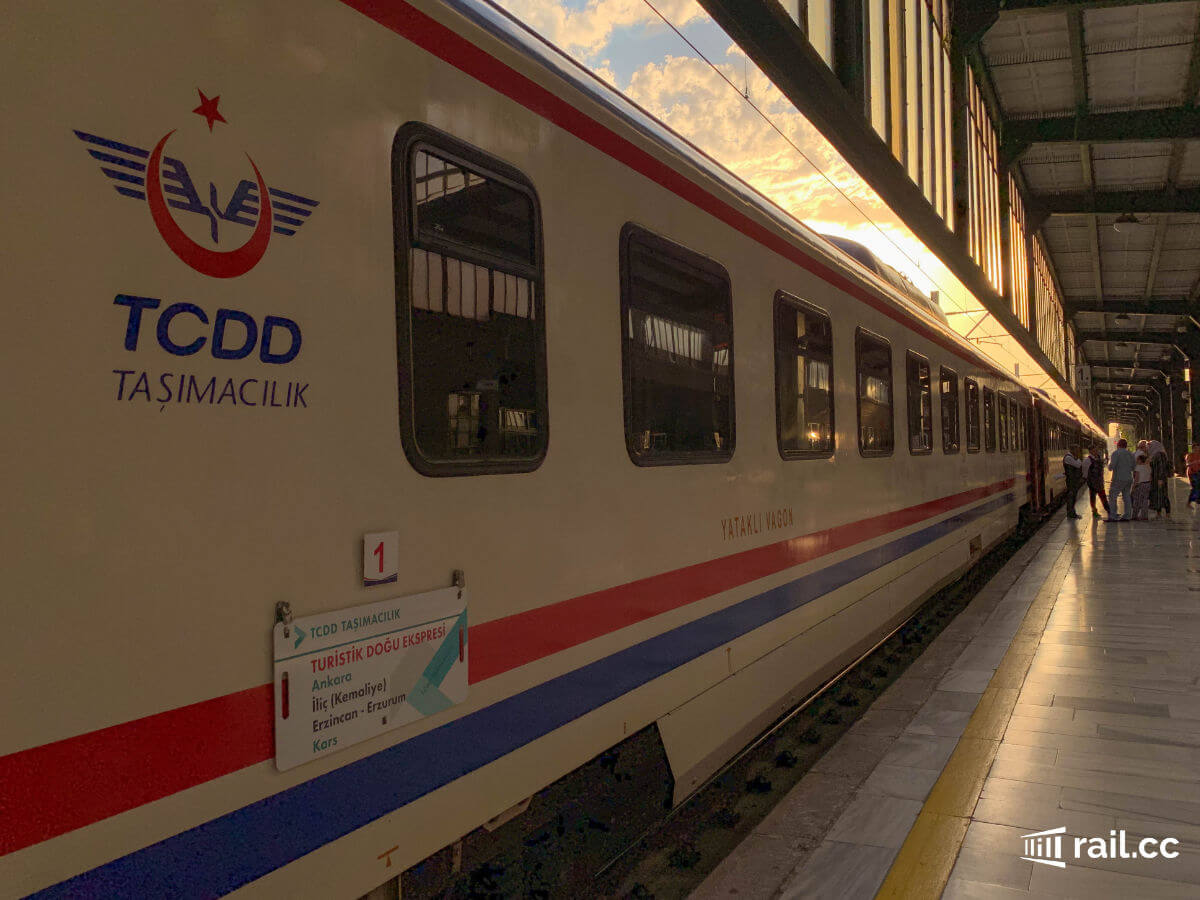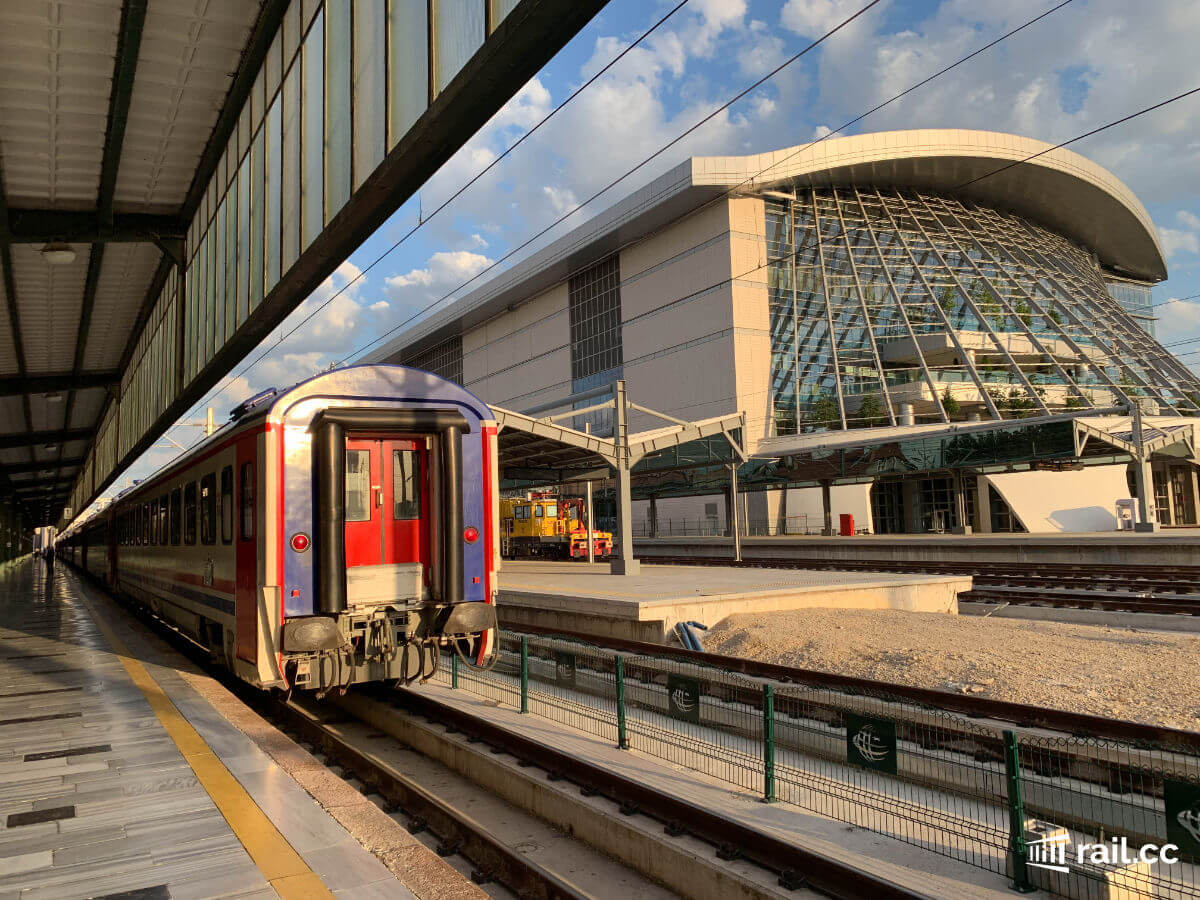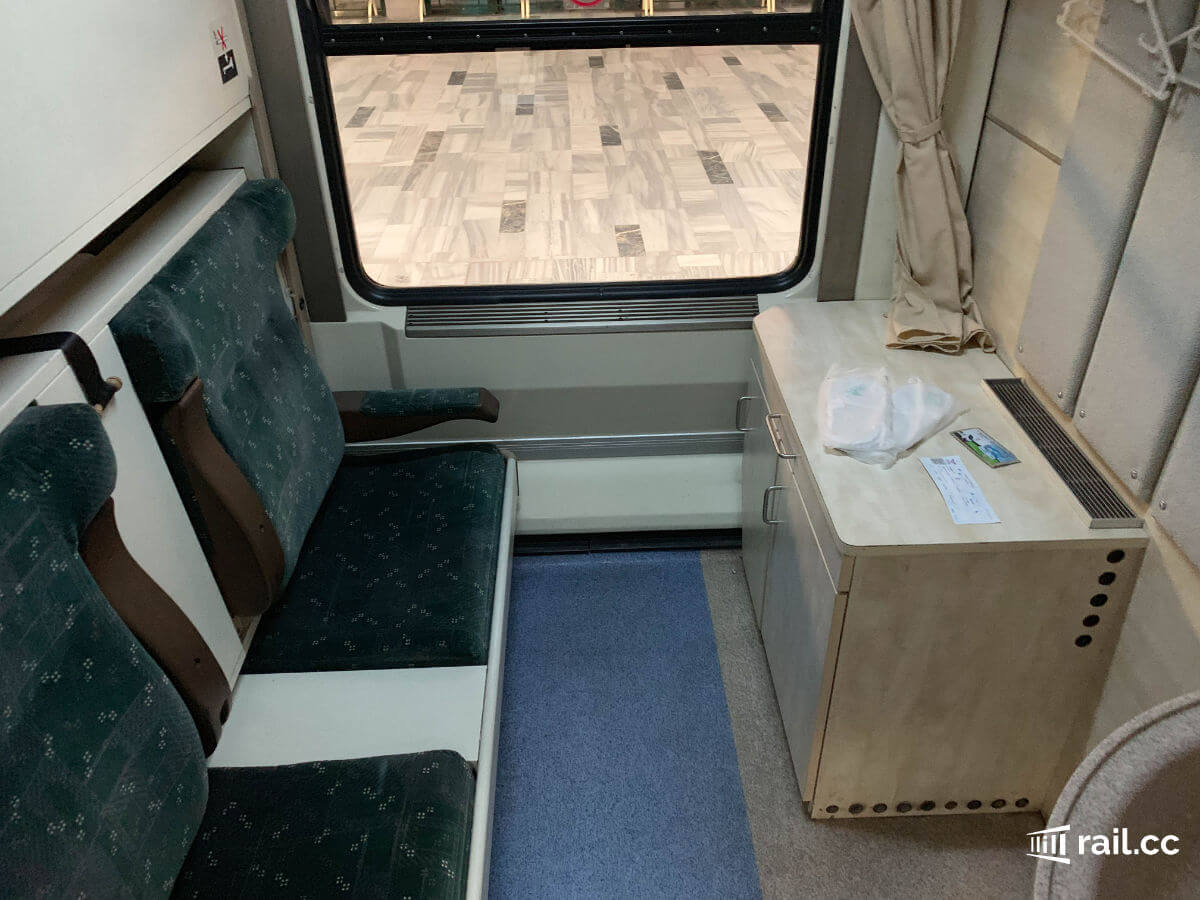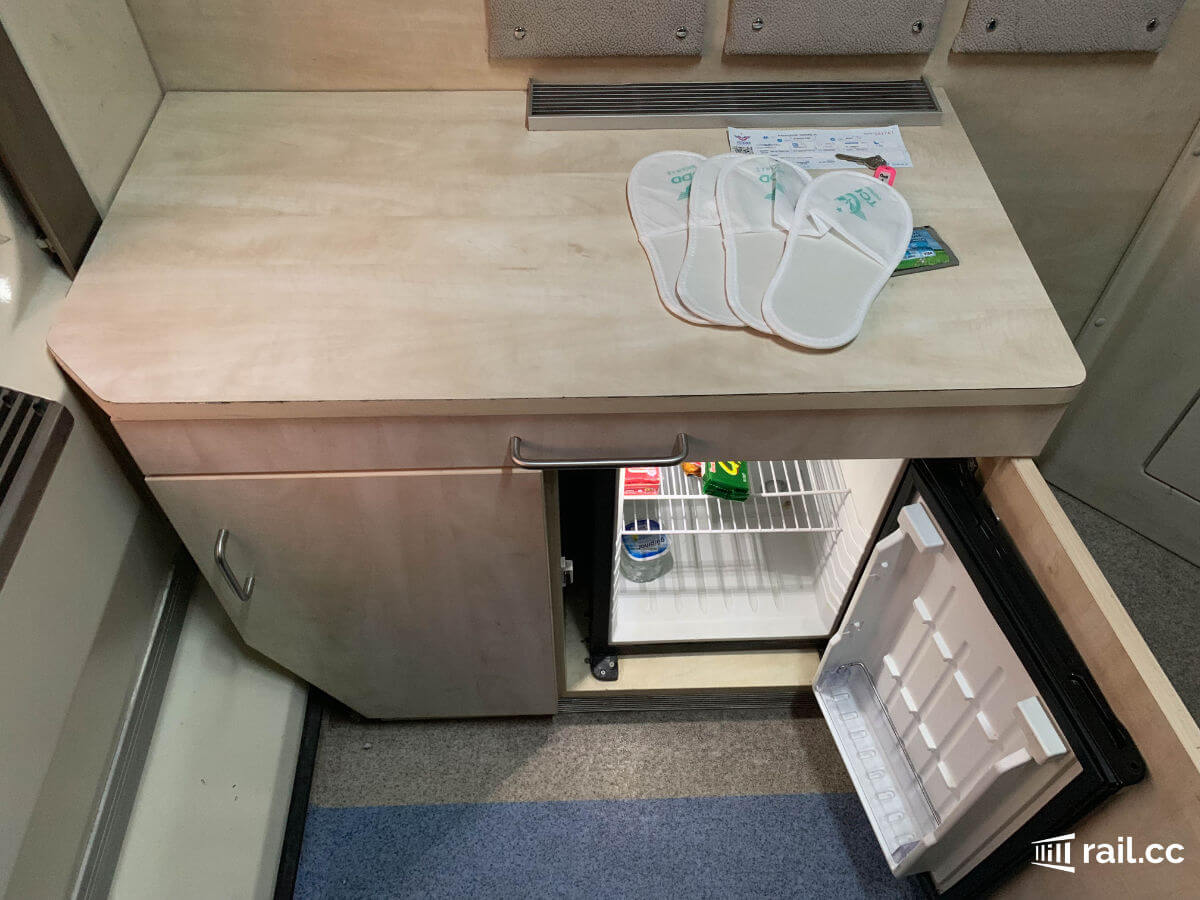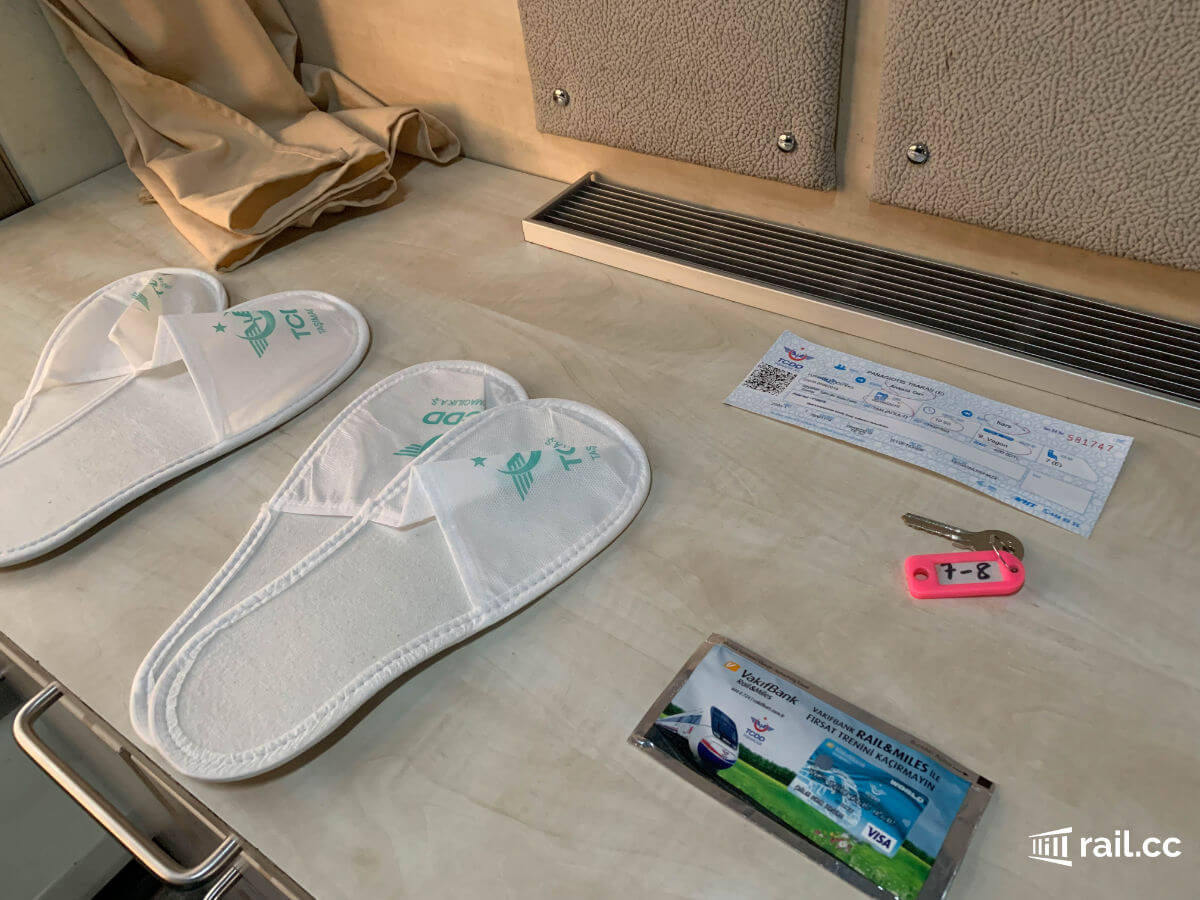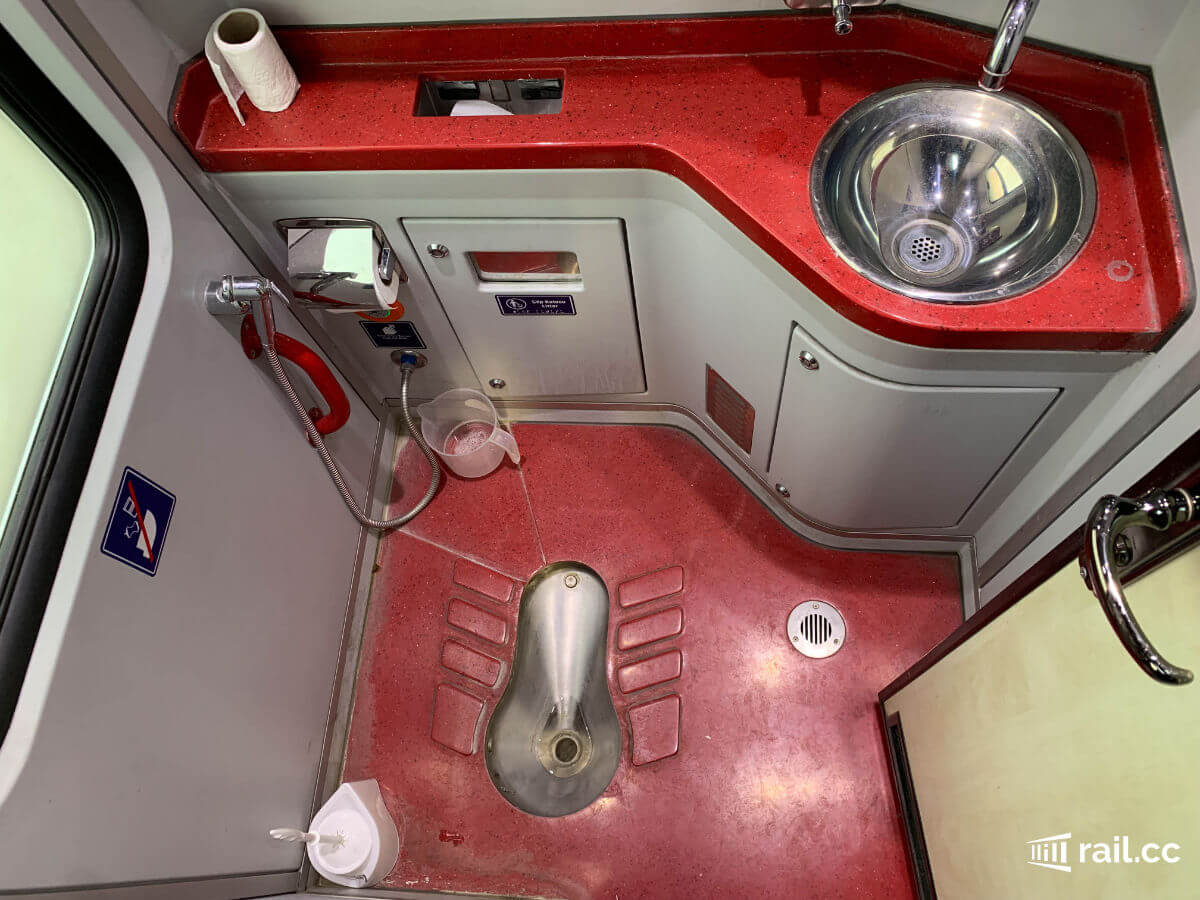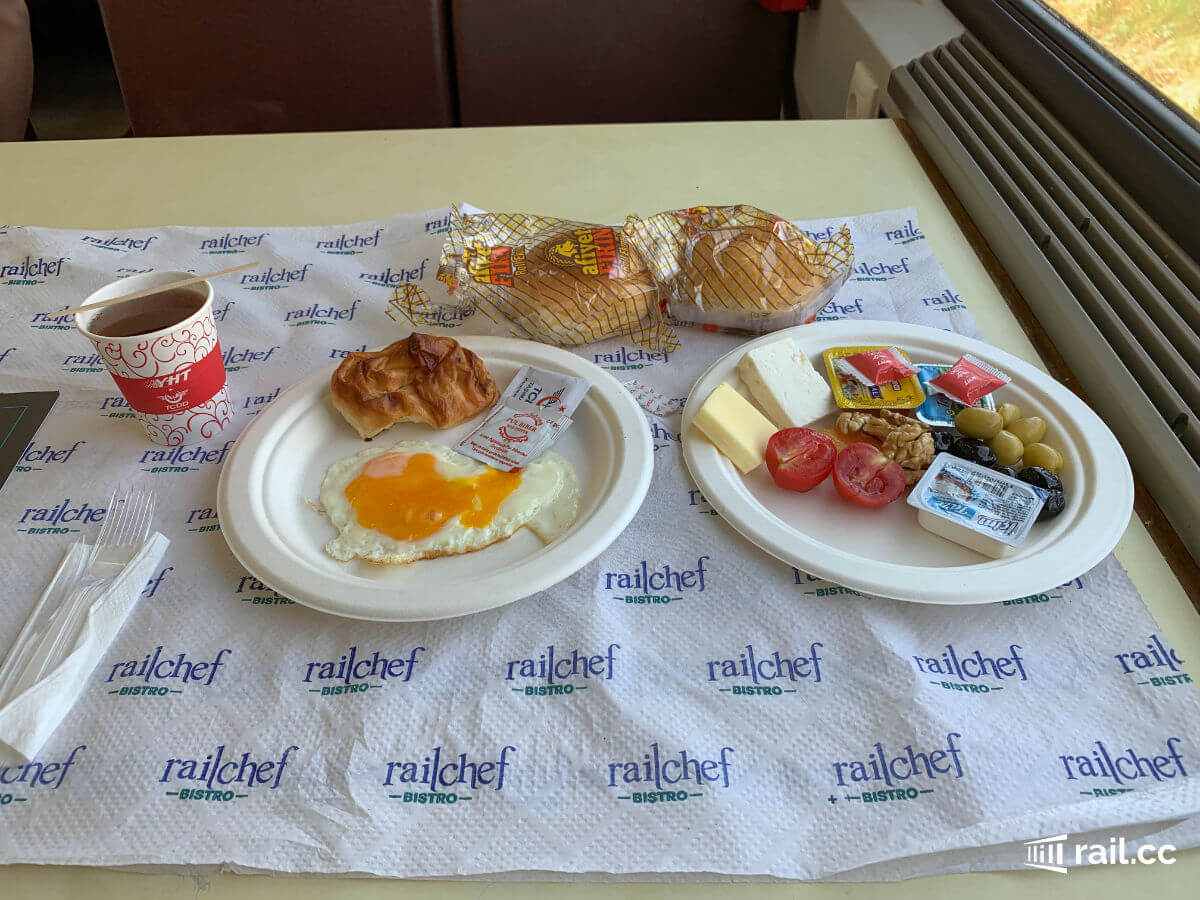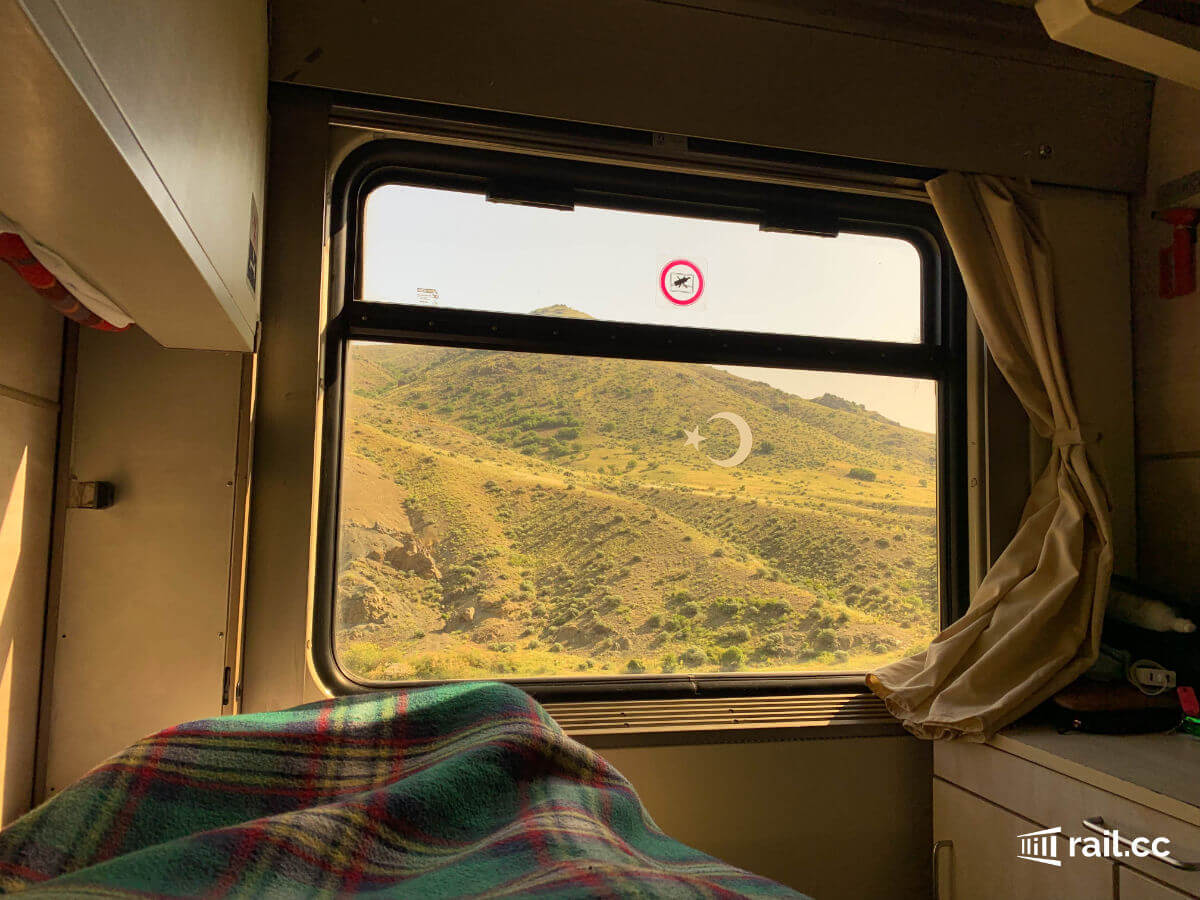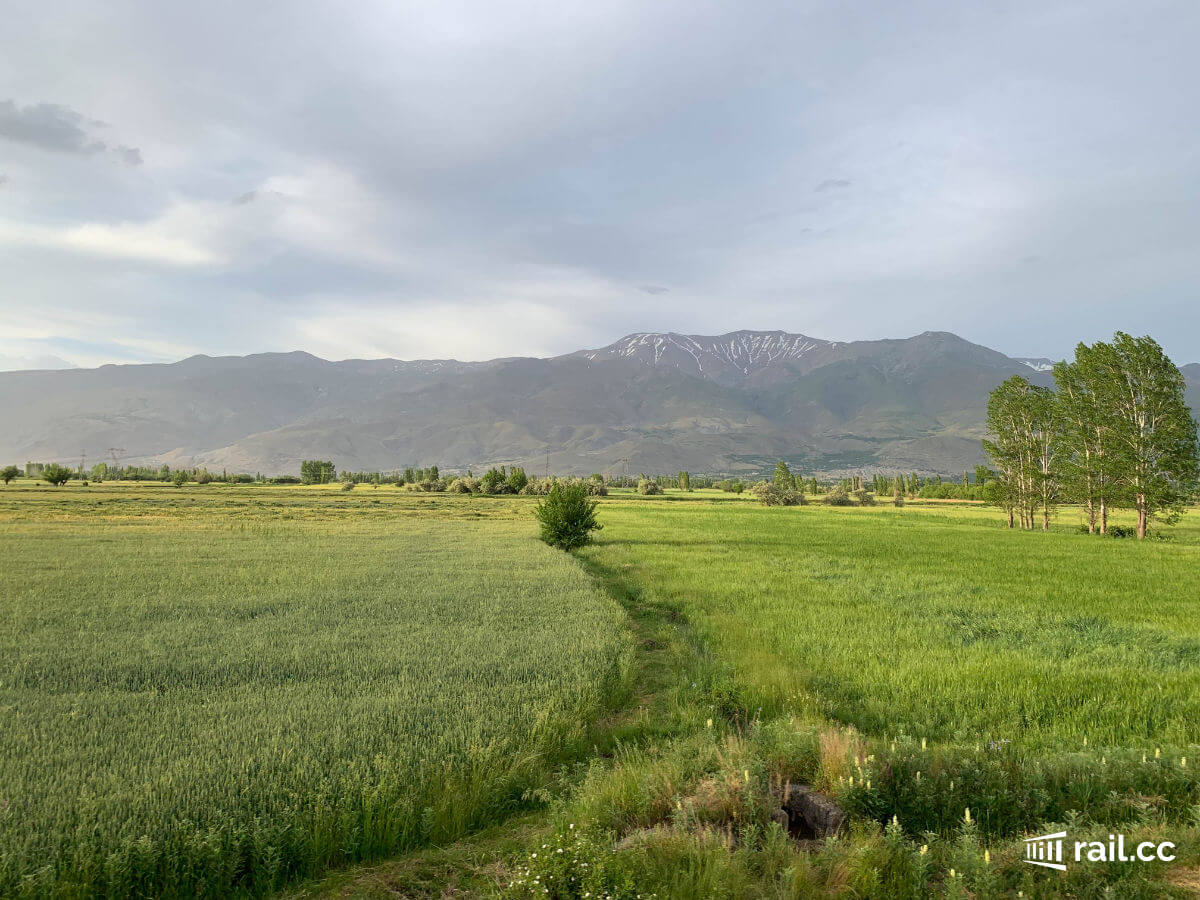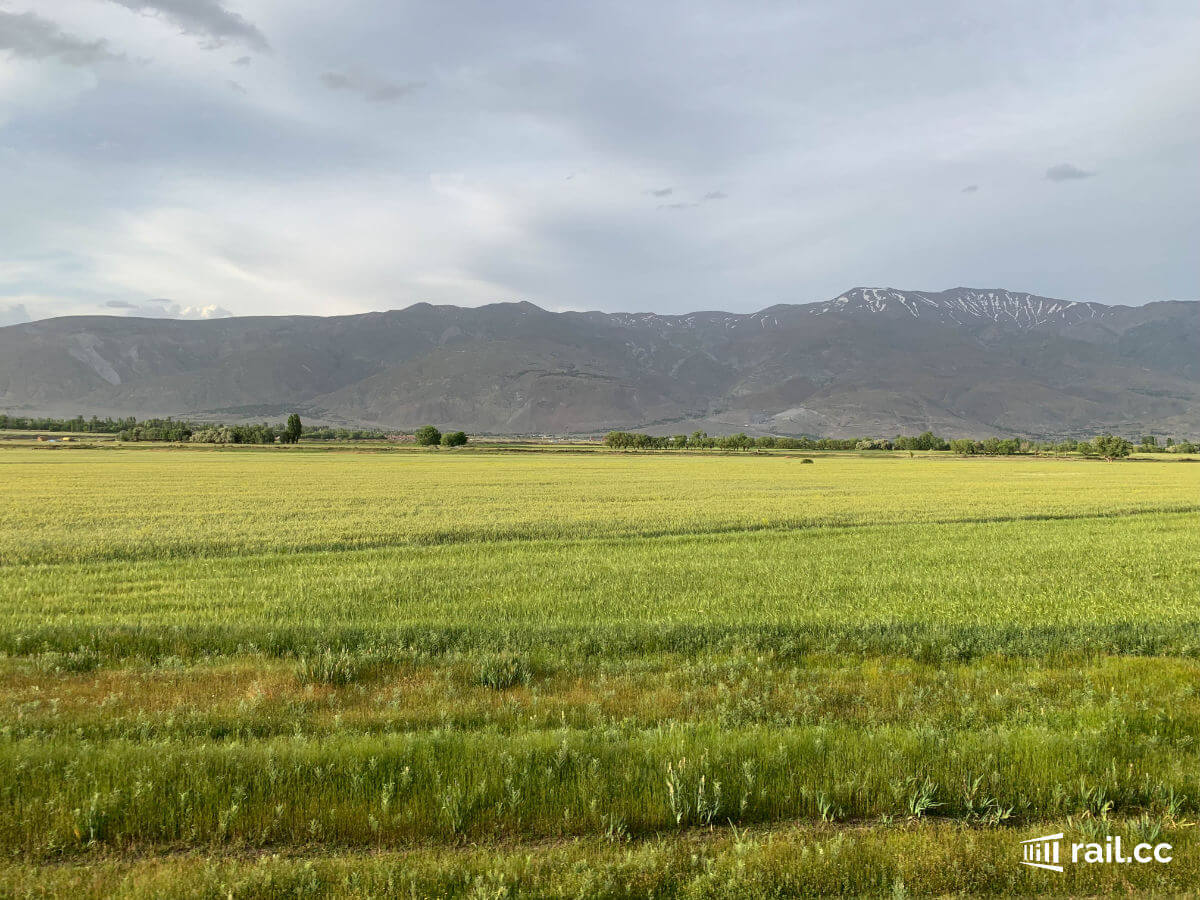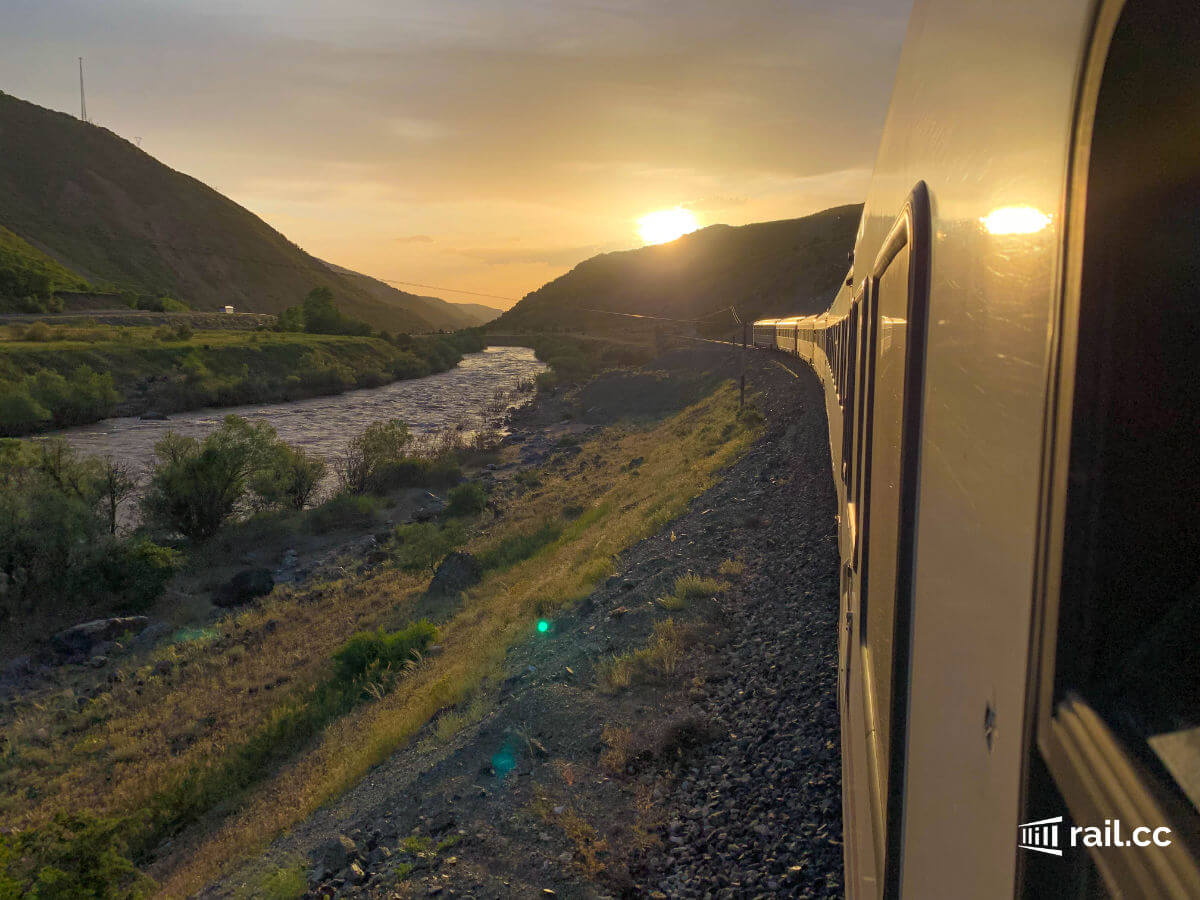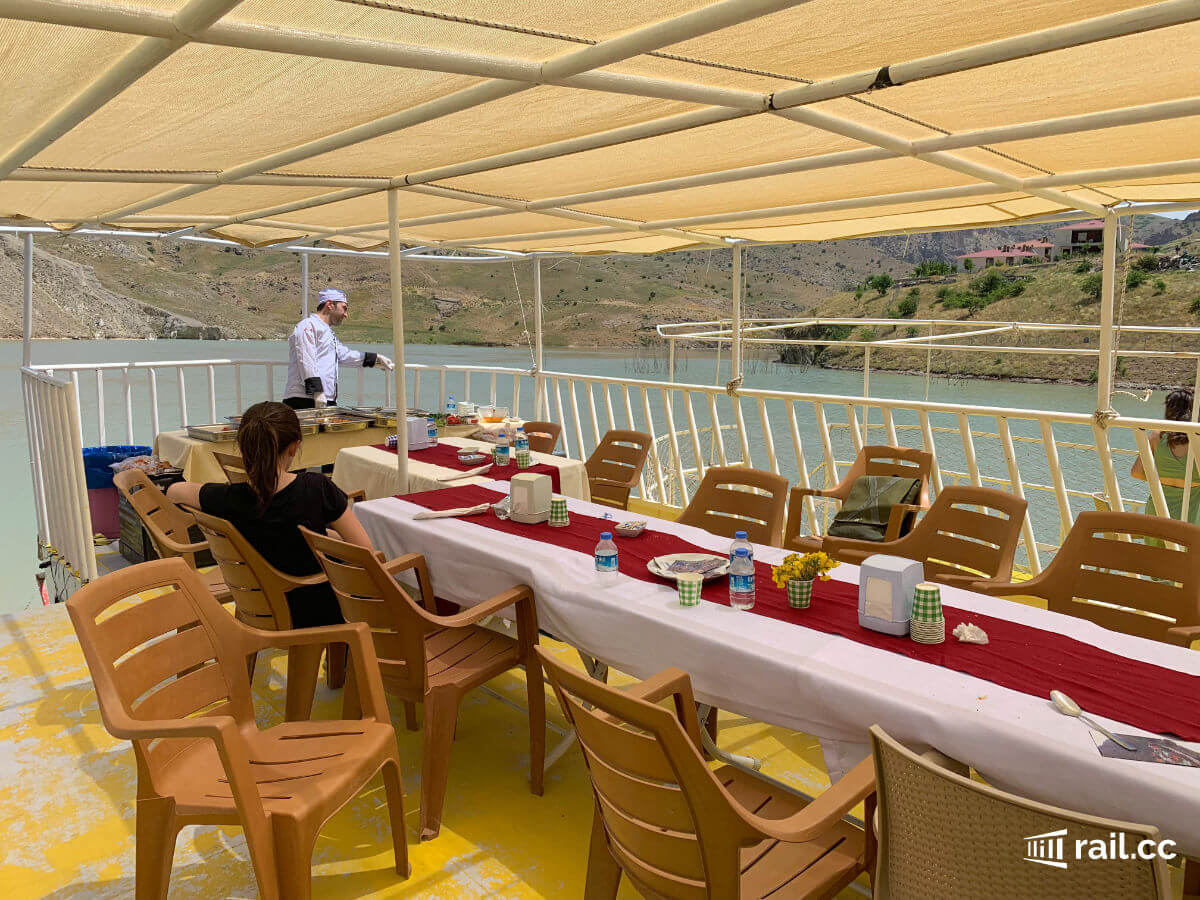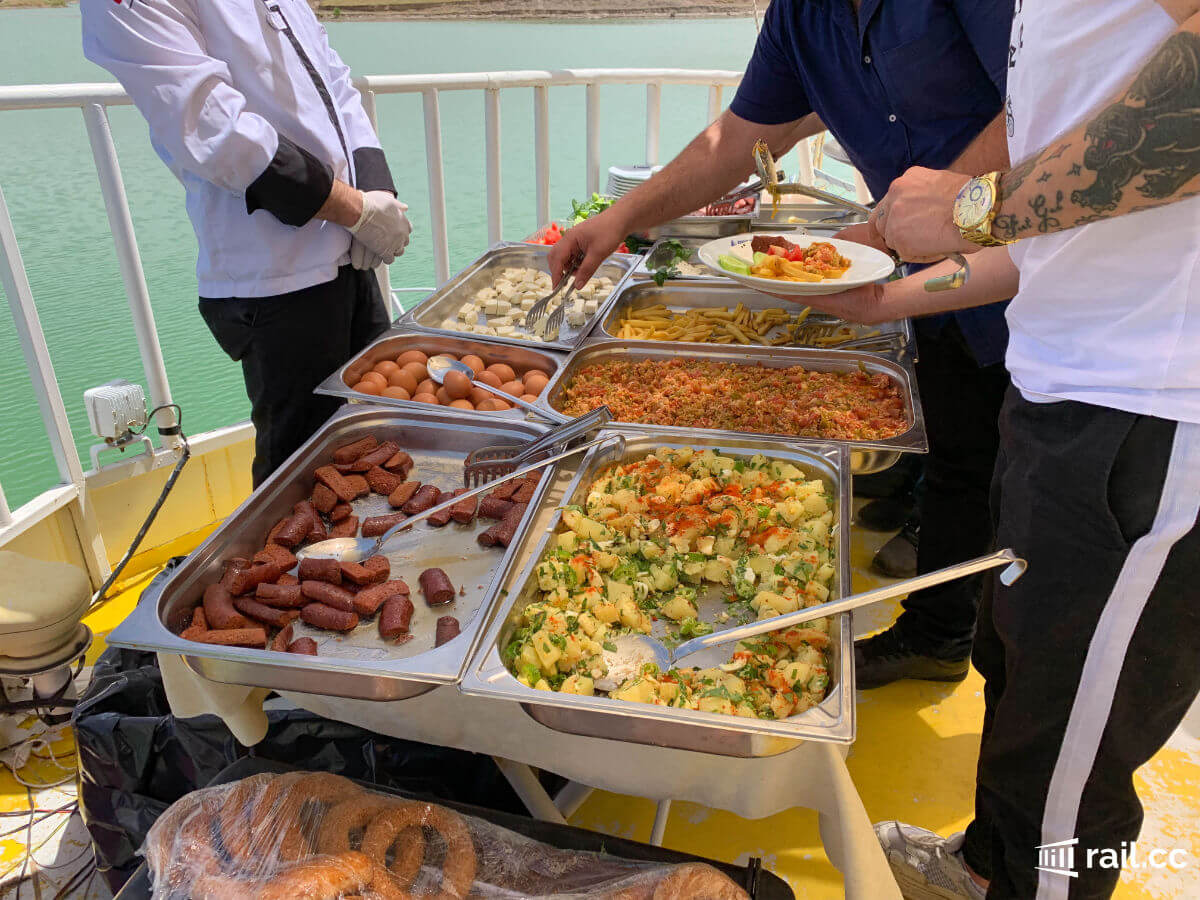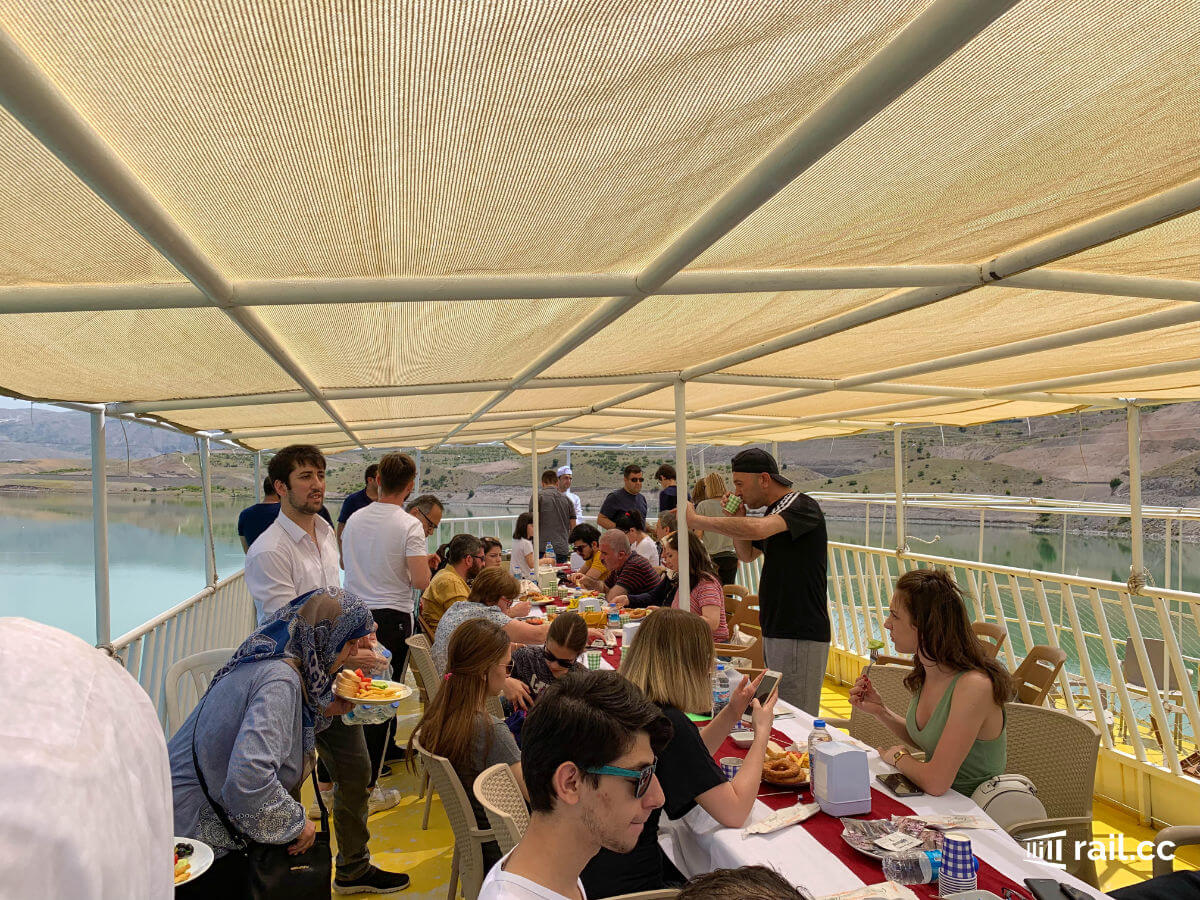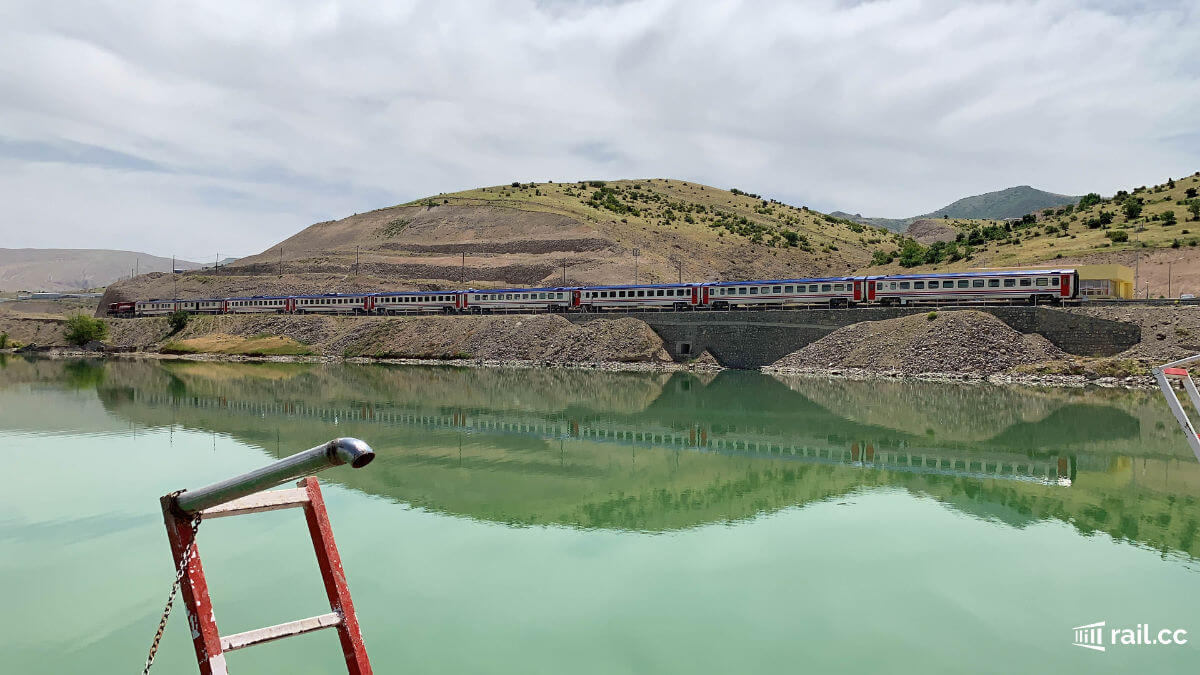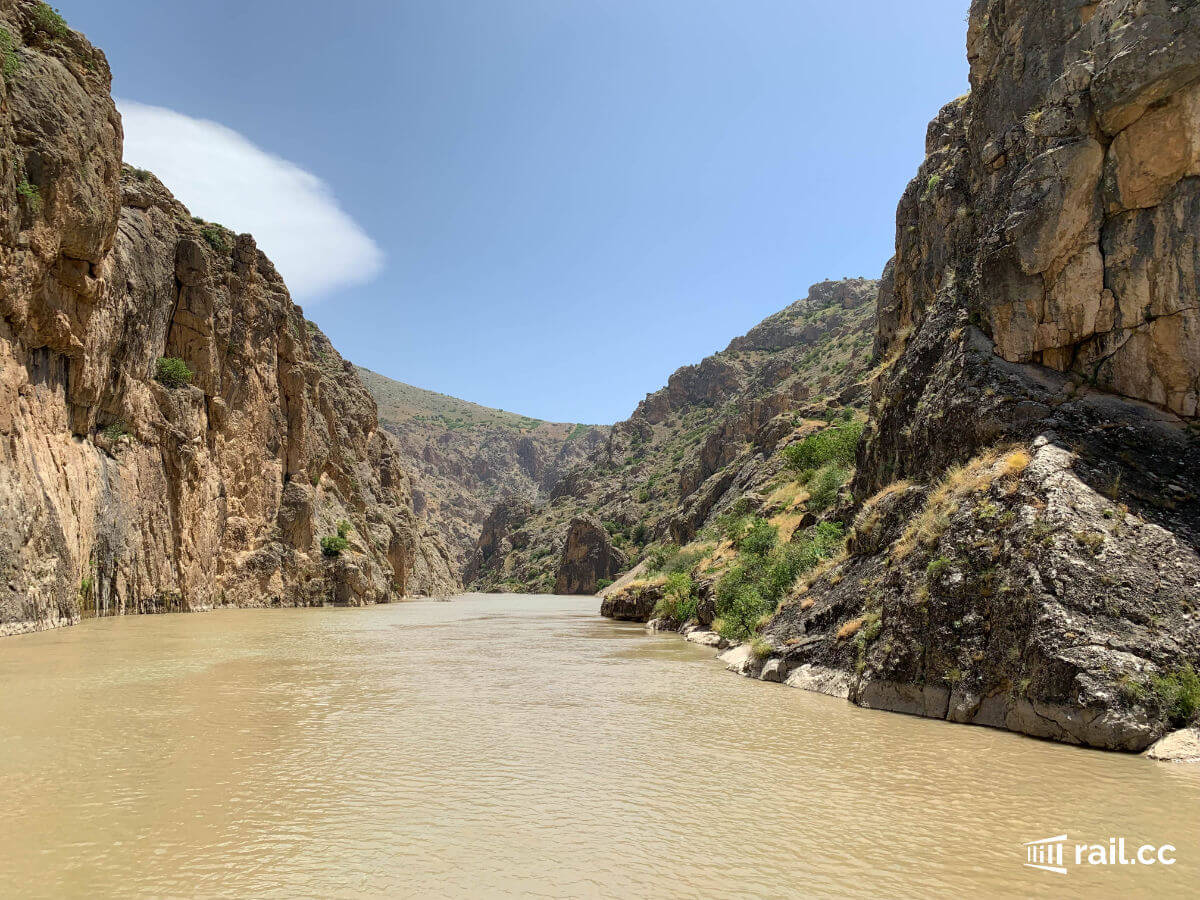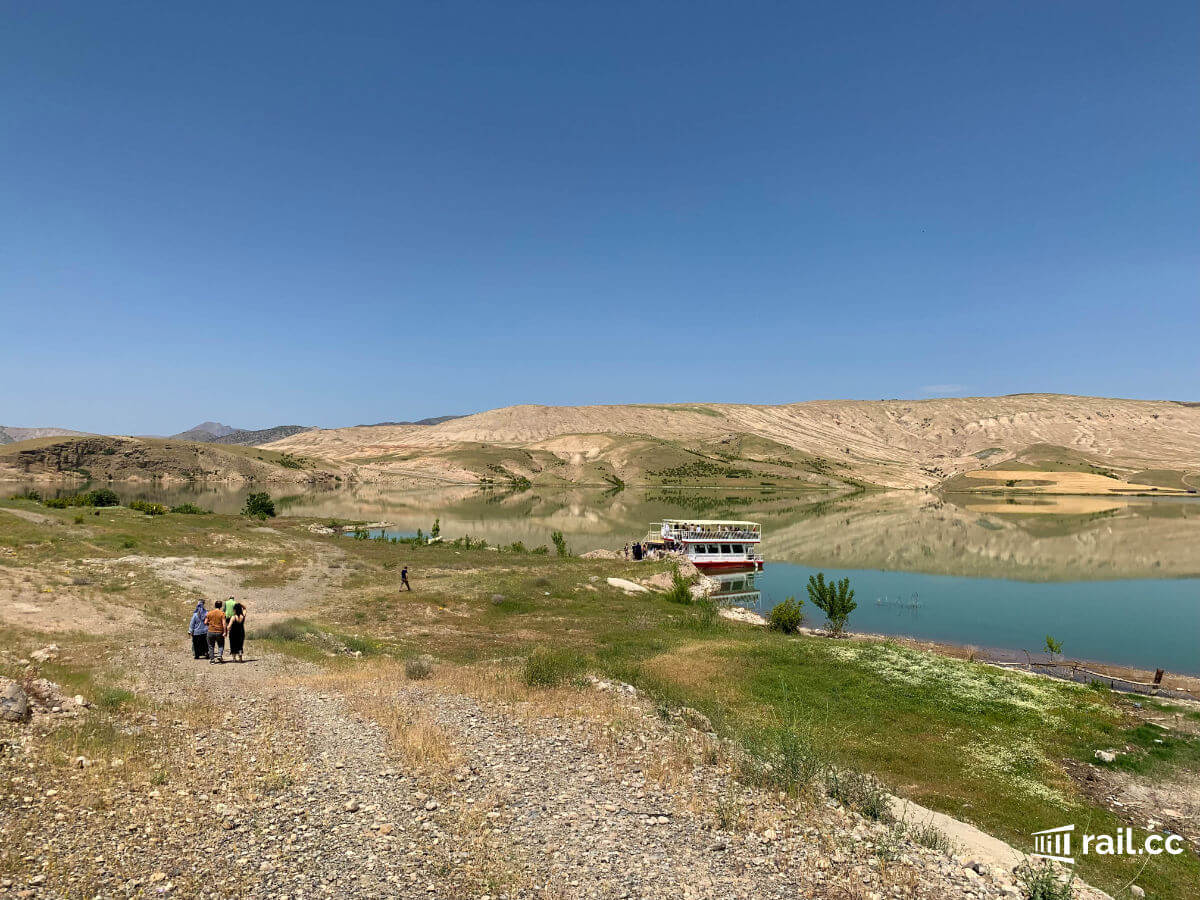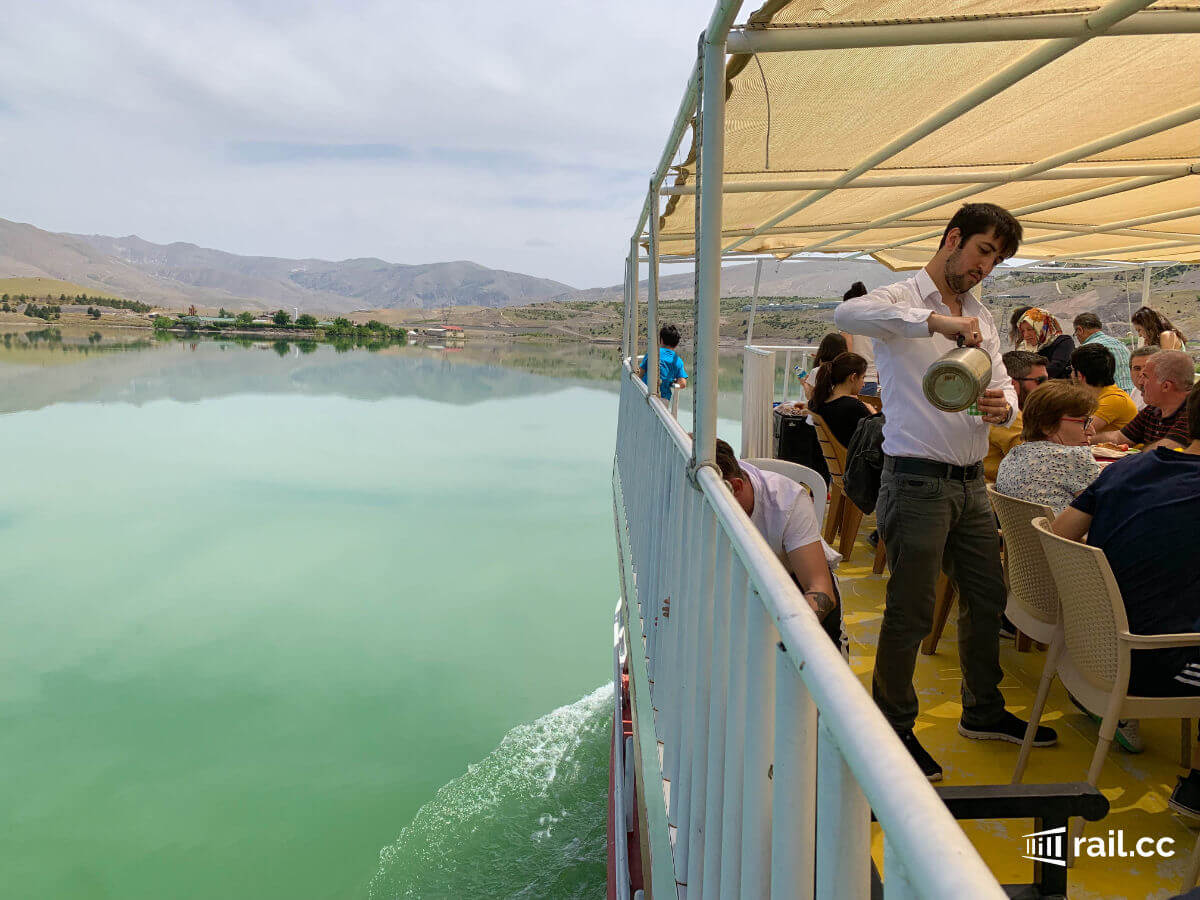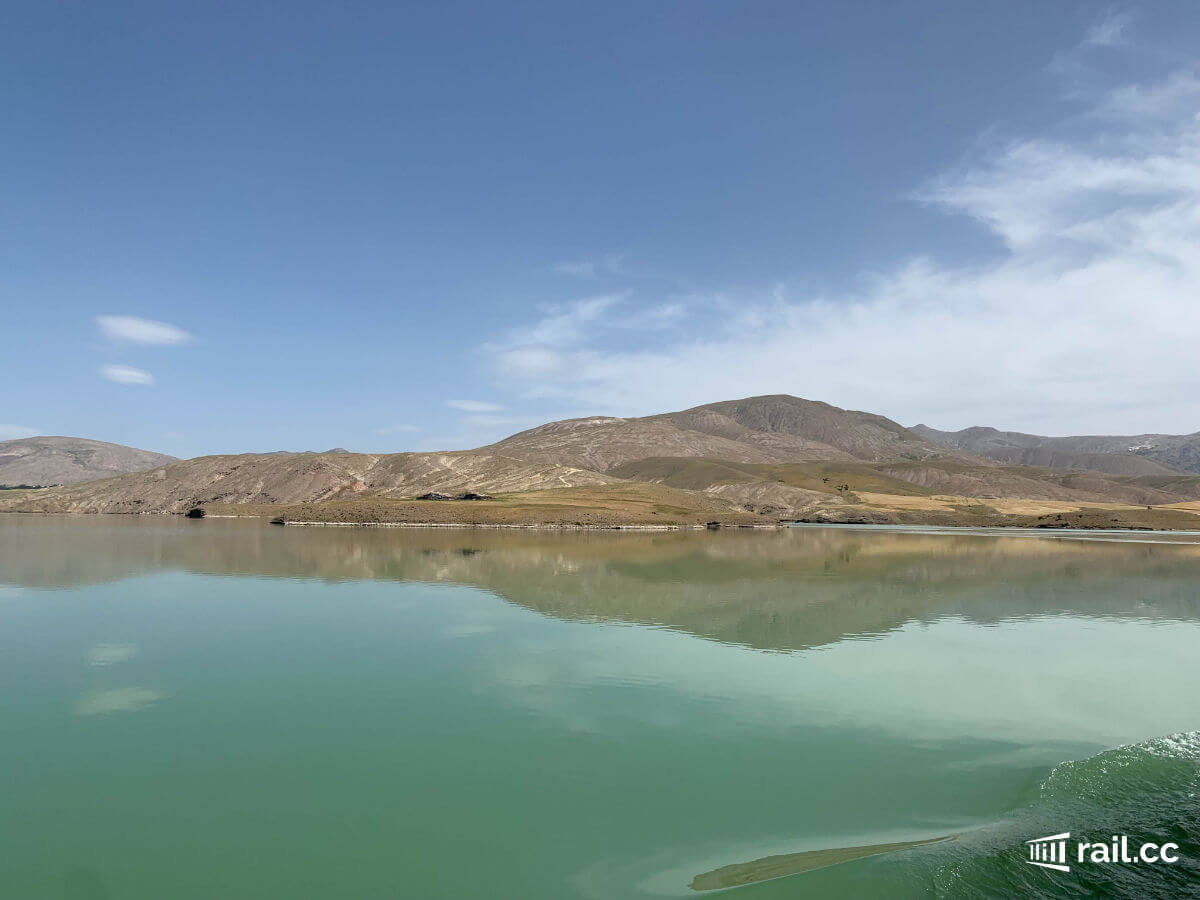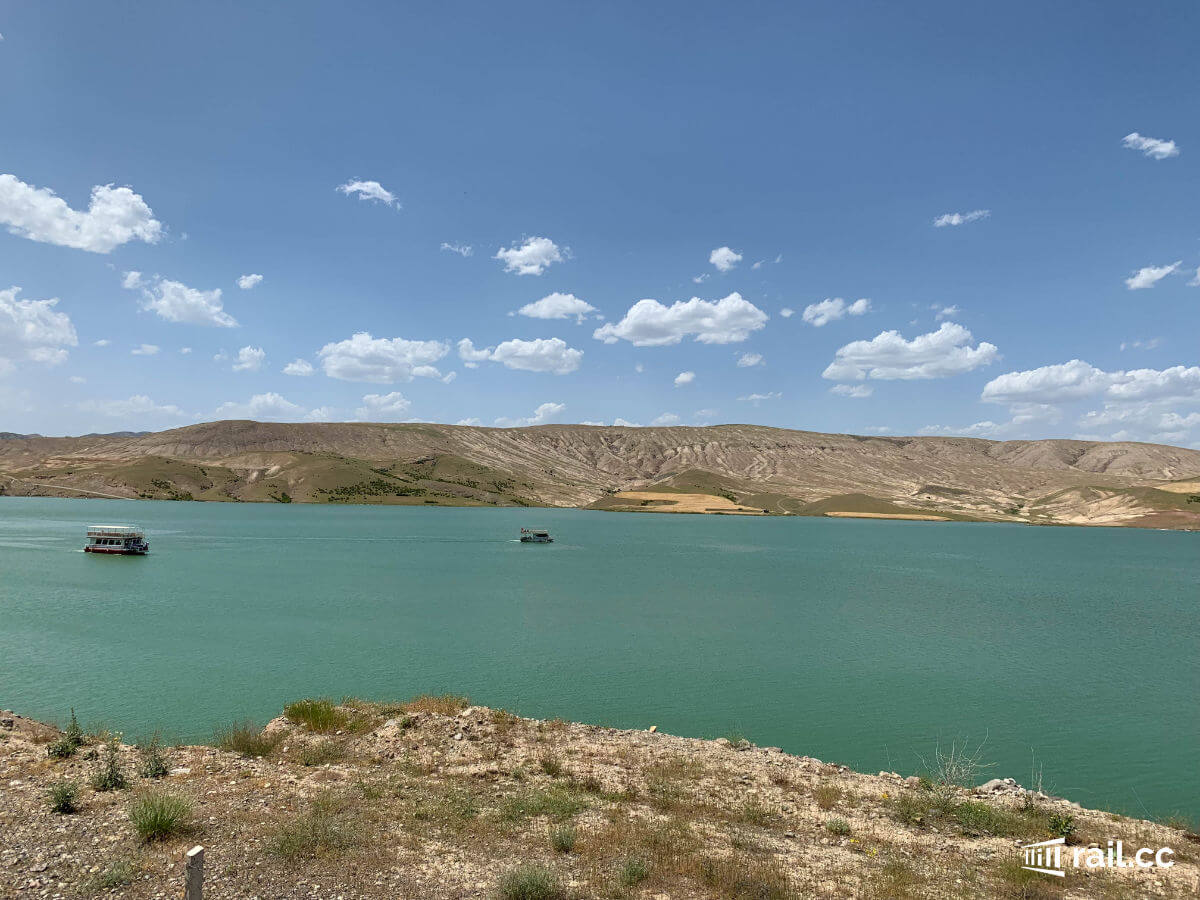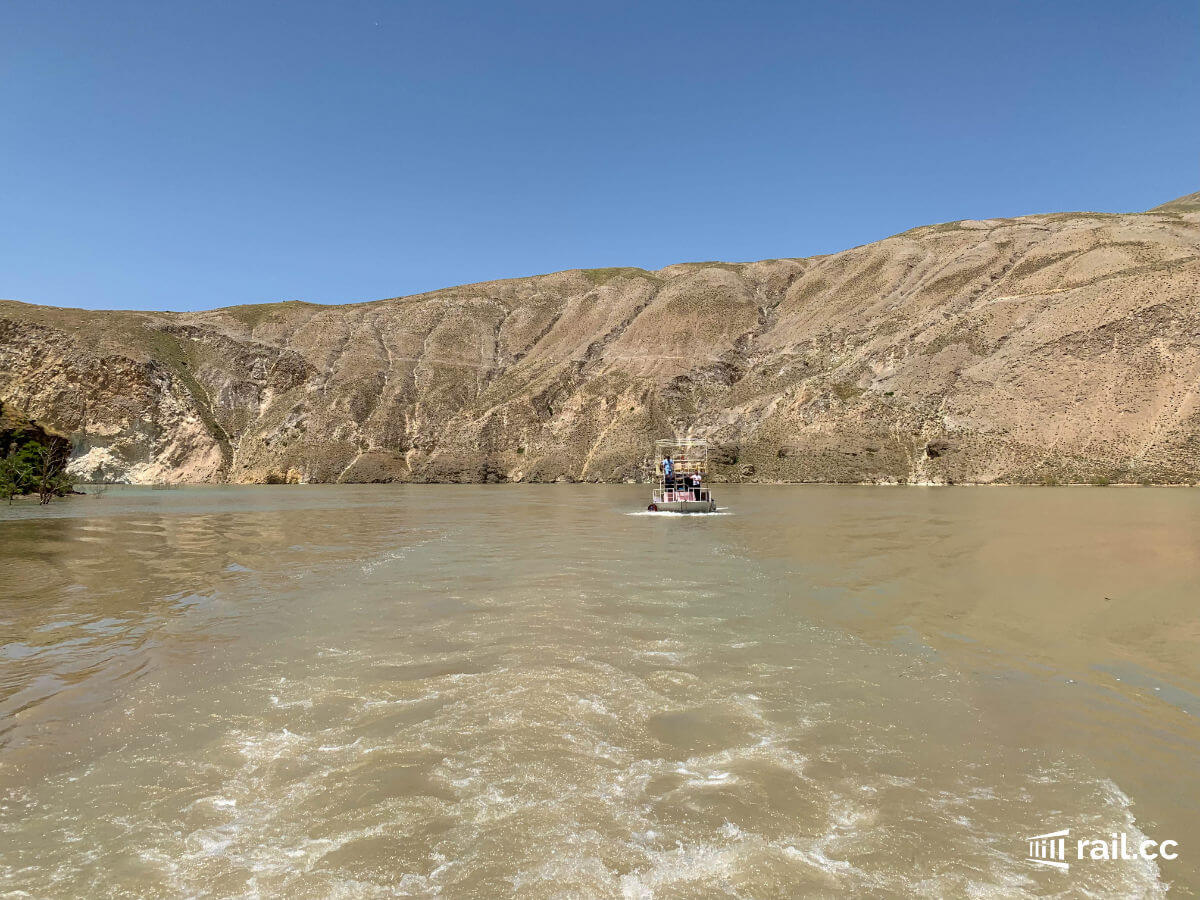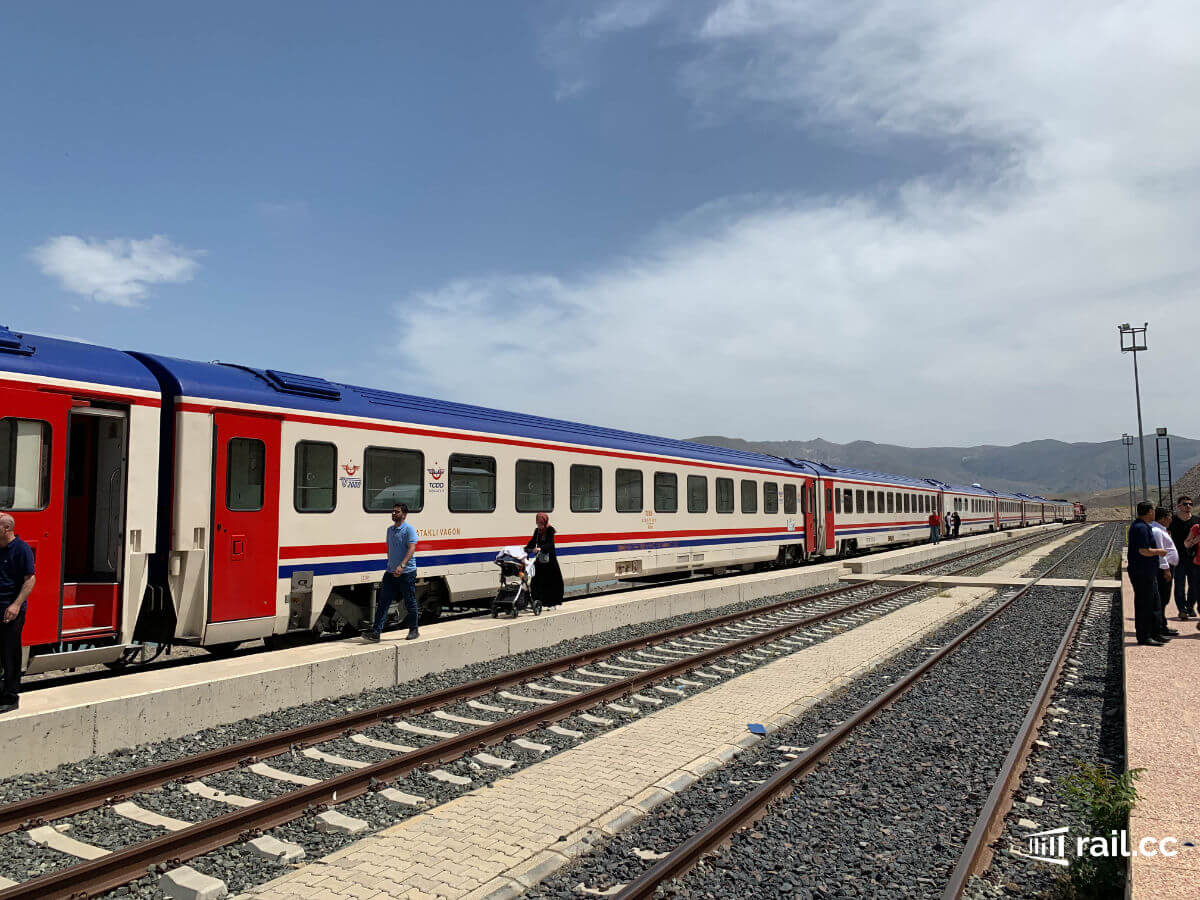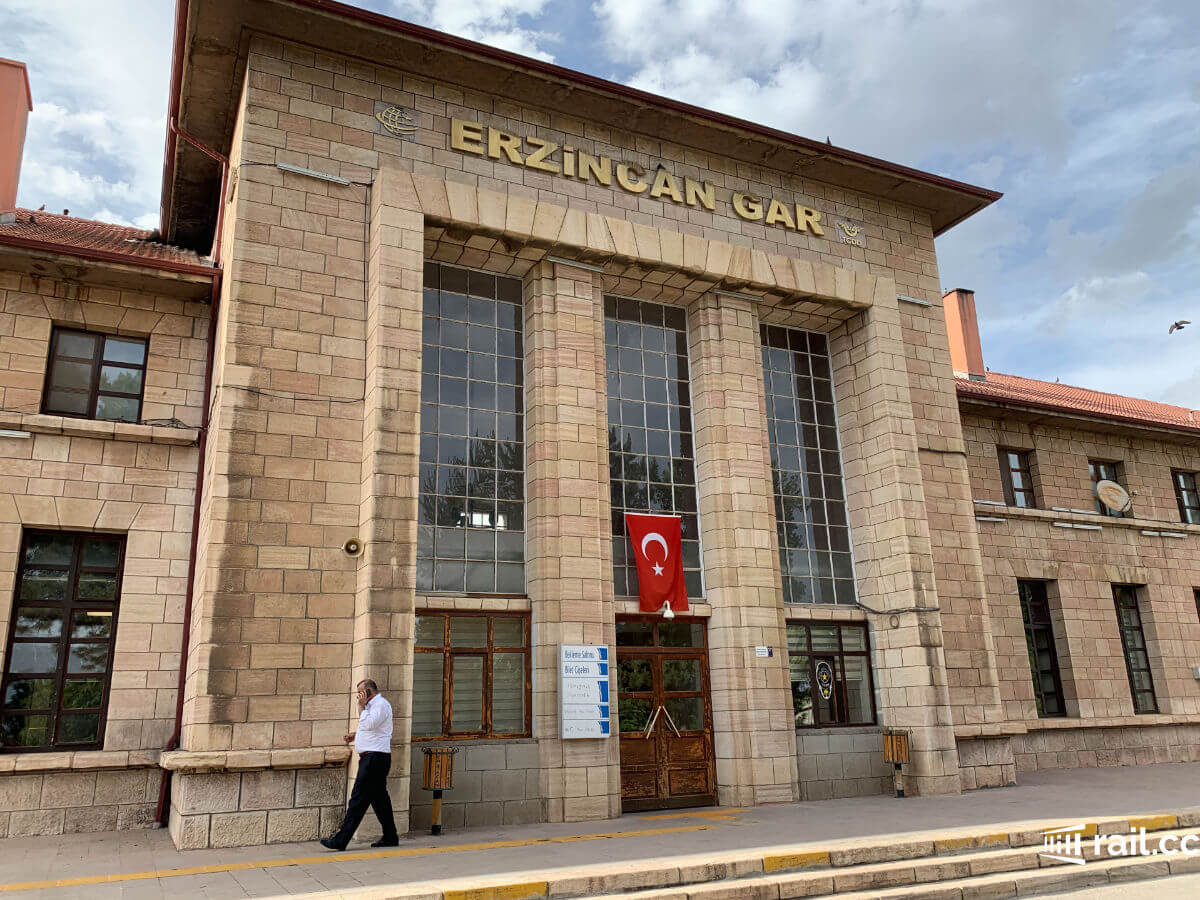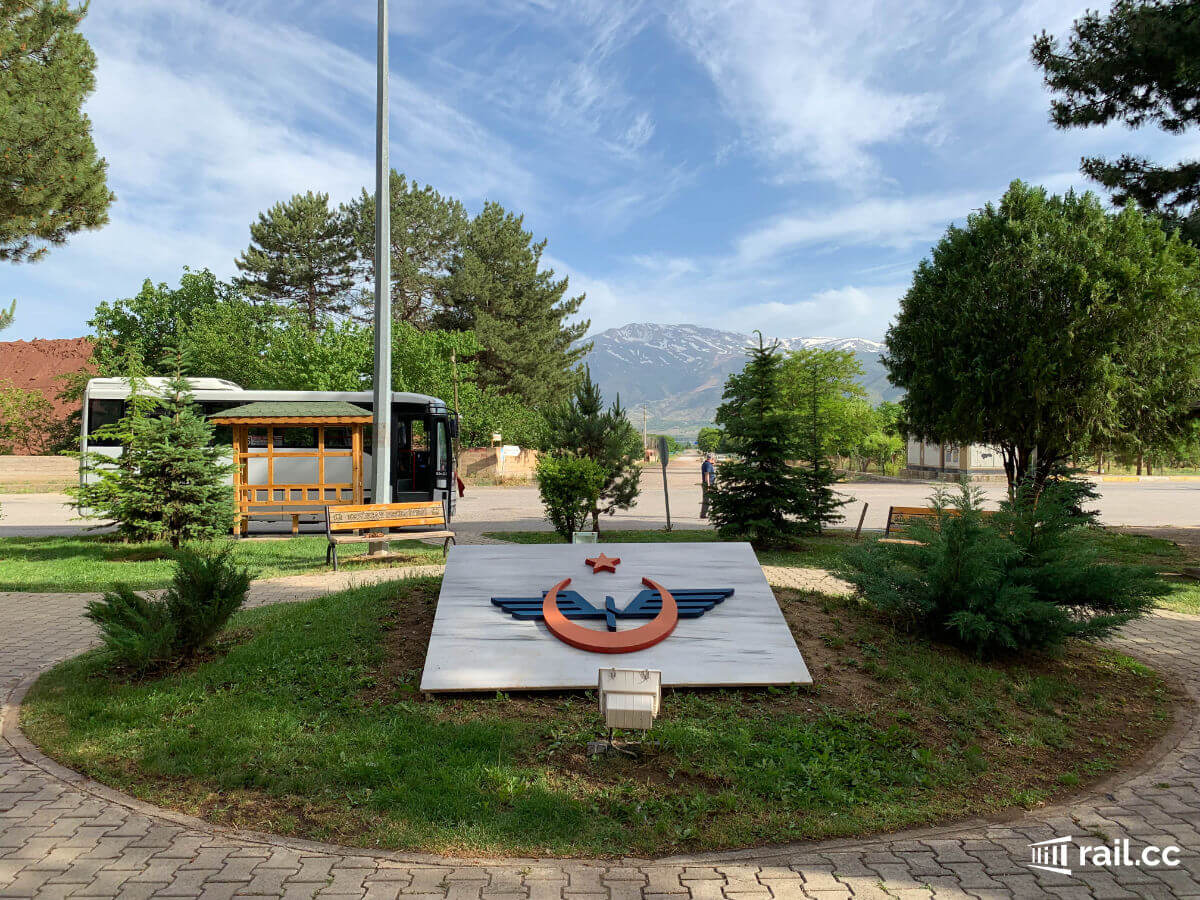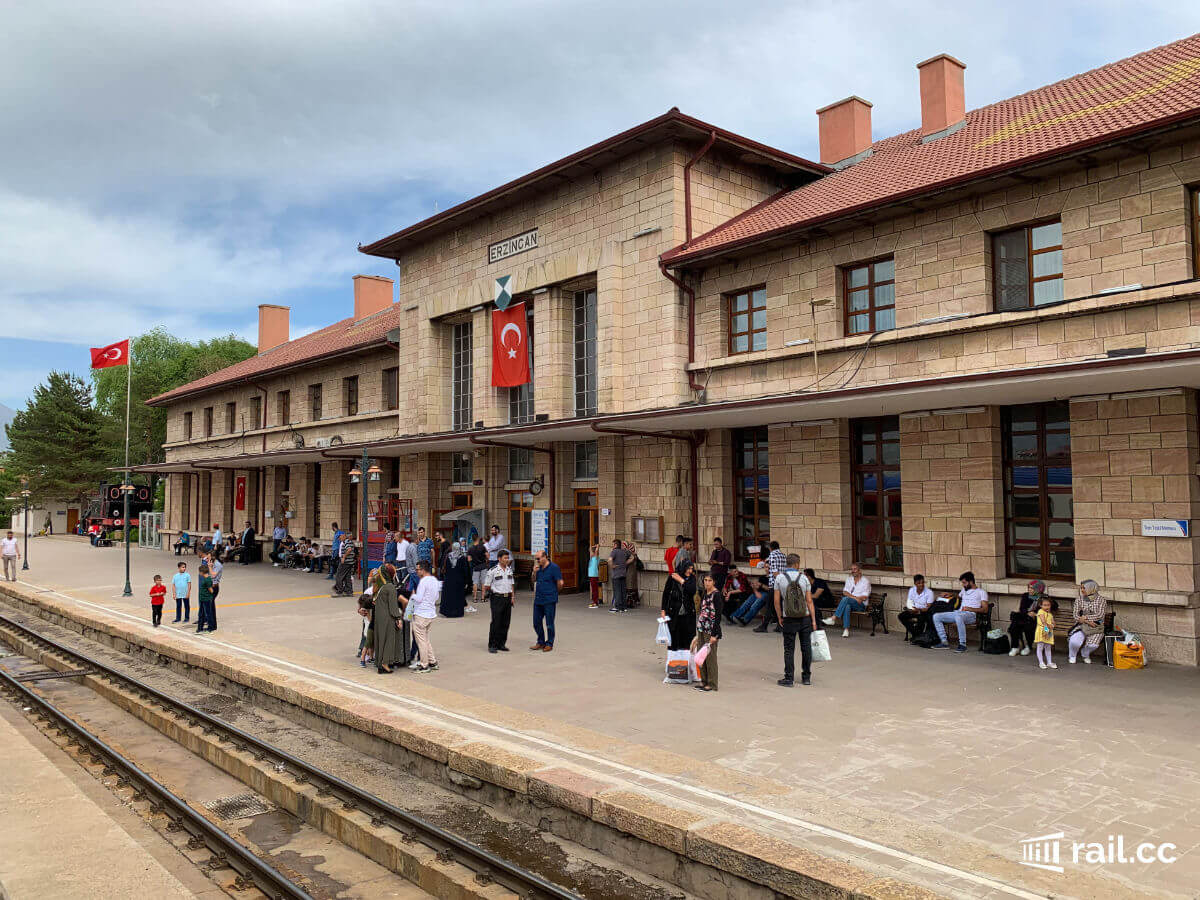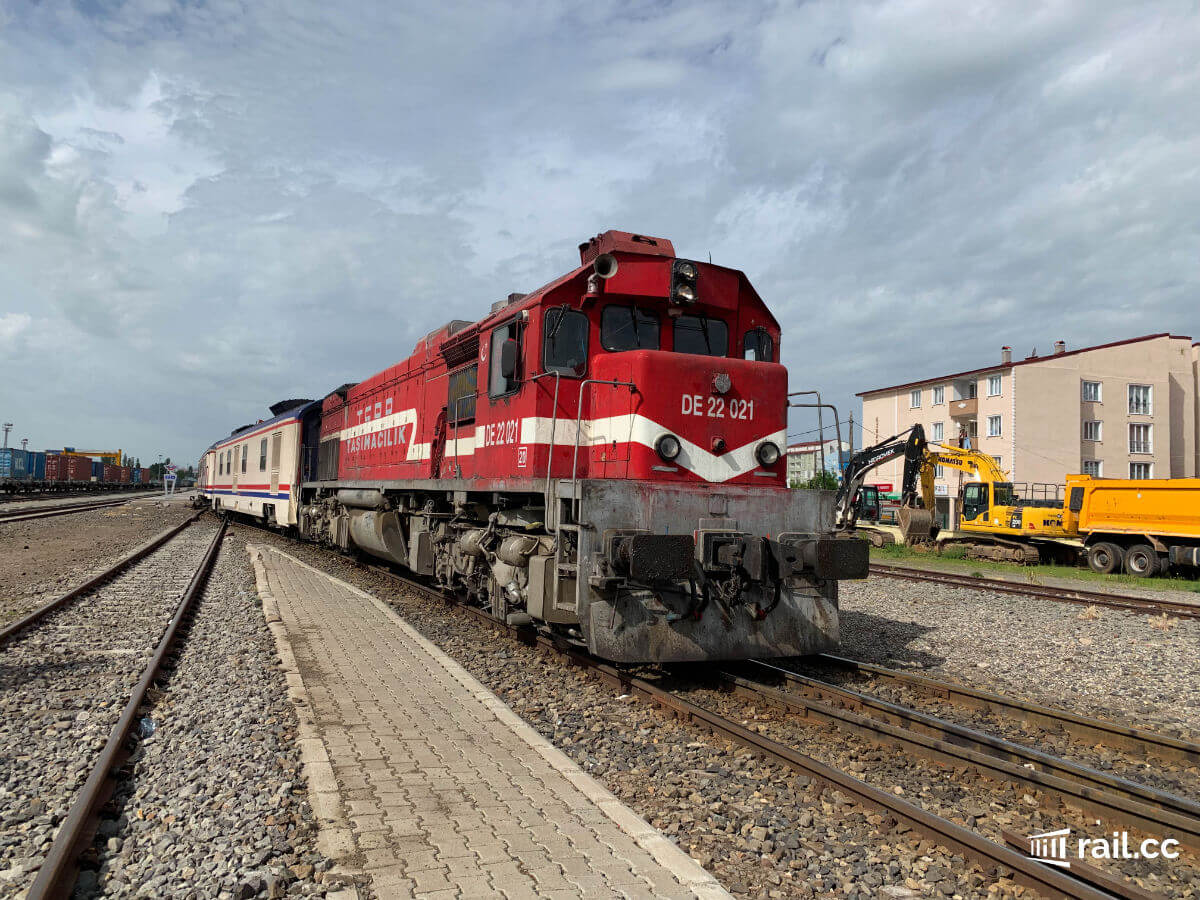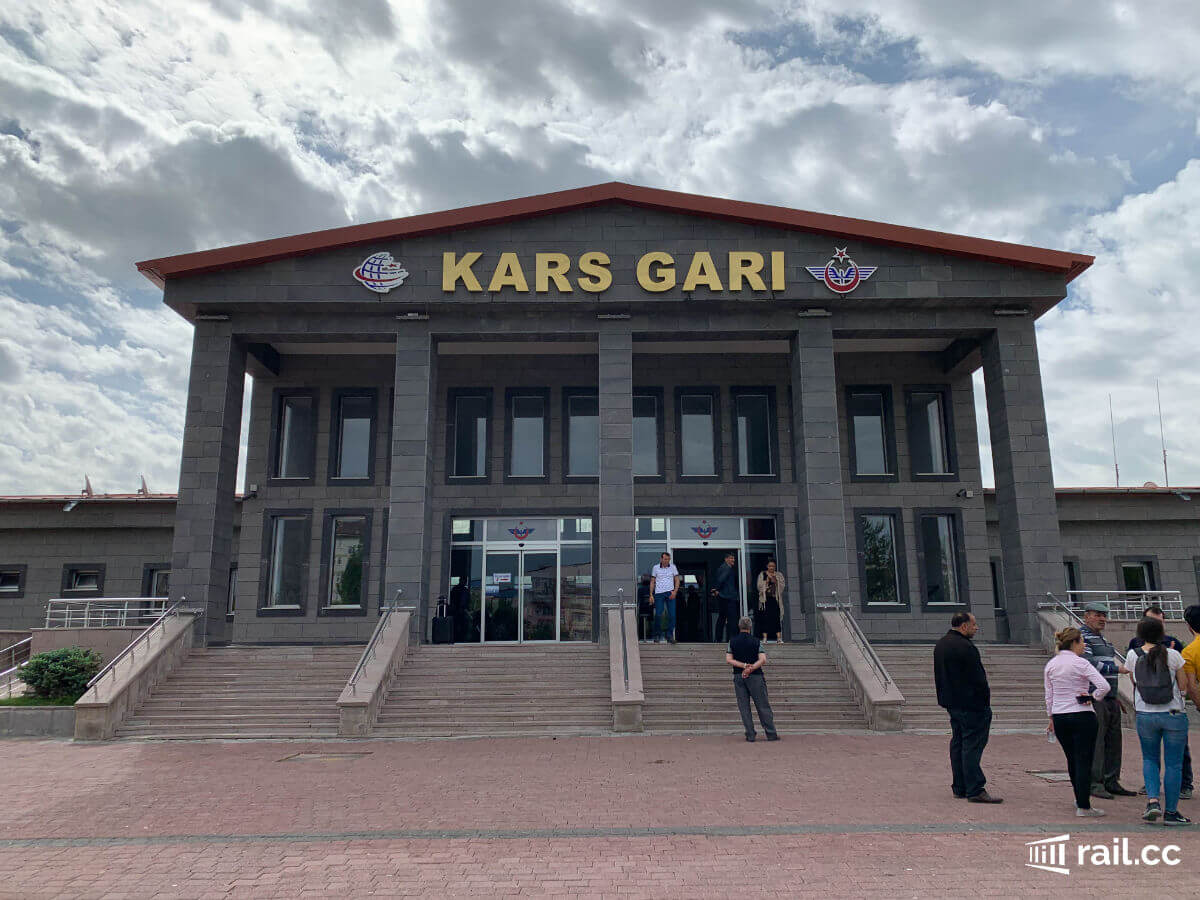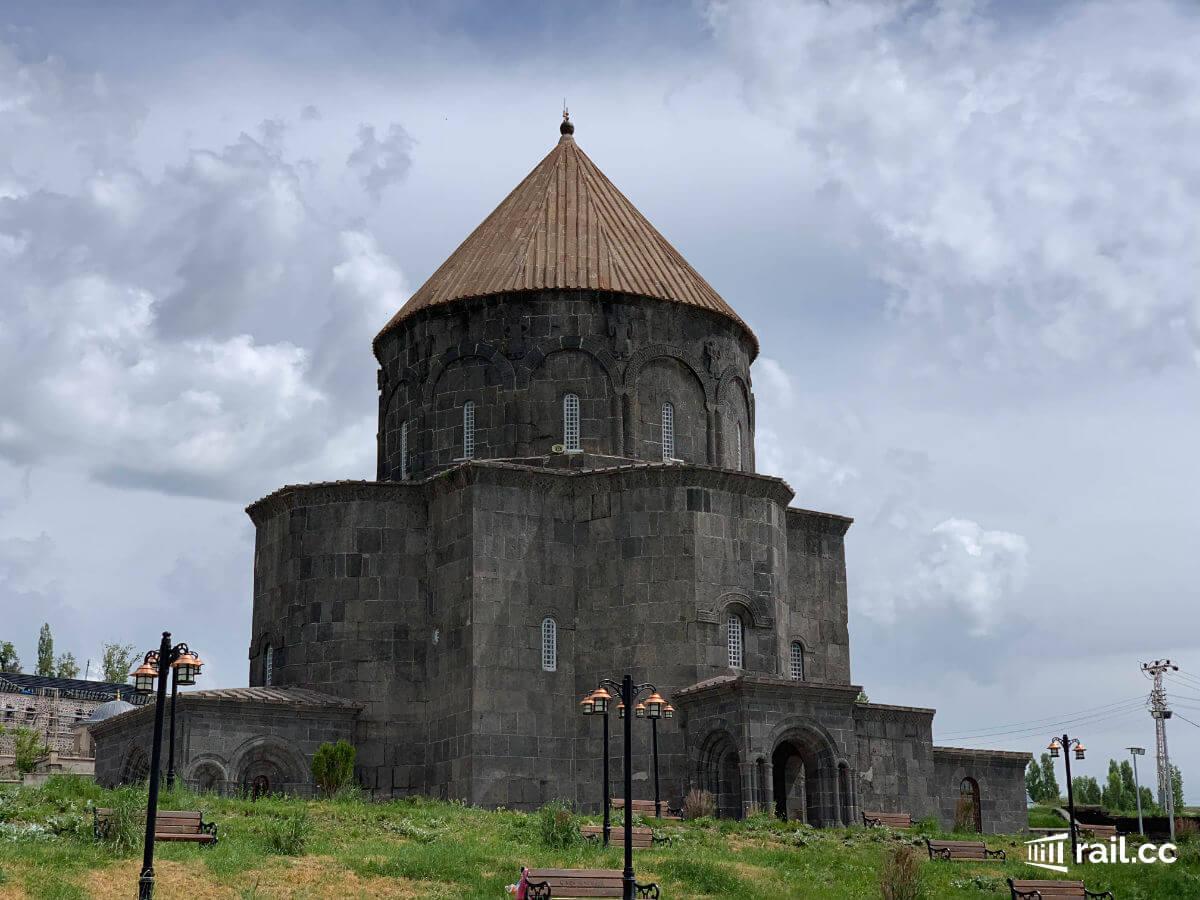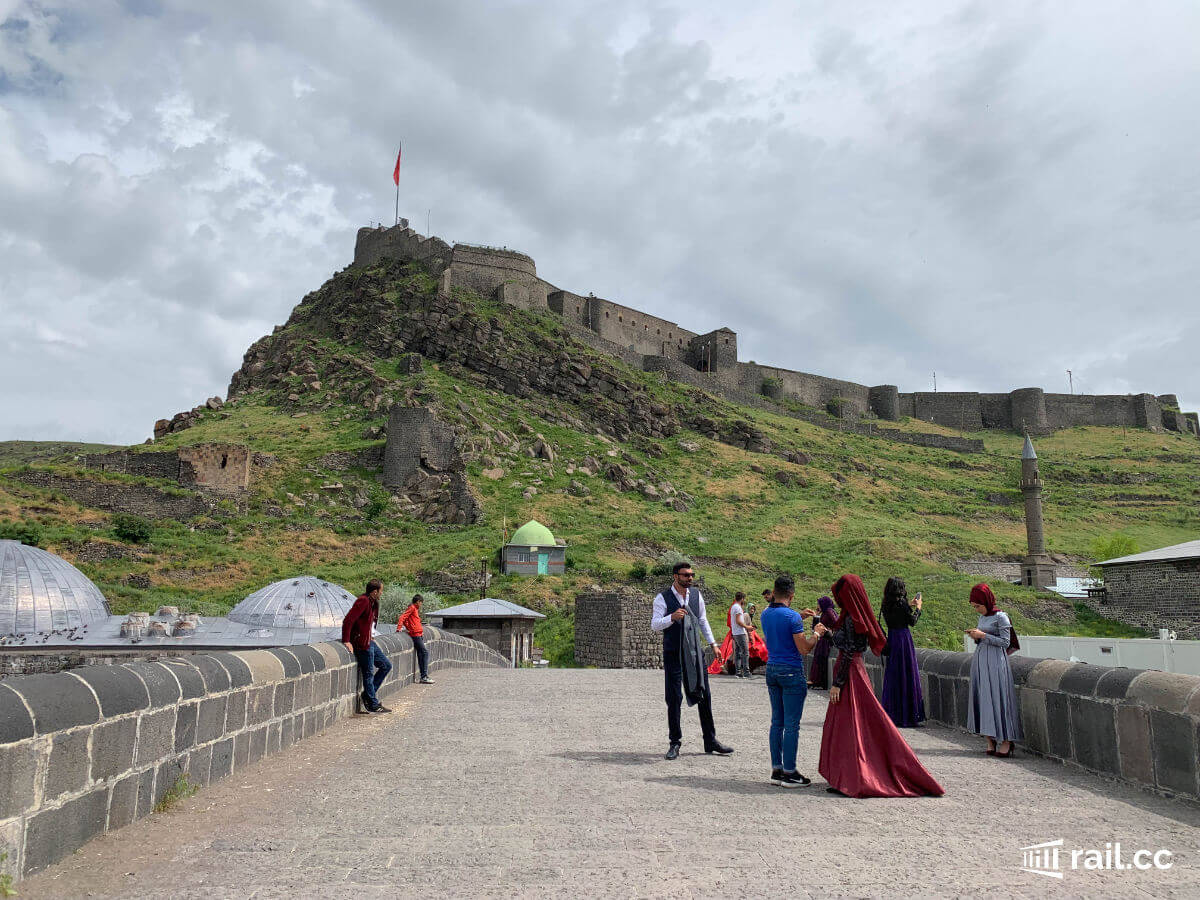Every year, thousands of students, photographers, bloggers and backpackers take the train trip to Kars, a former Russian outpost. Often characterised as the most hipster domestic travel route, this 27-hour service has attracted a lot of attention recently. Its popularity has been such that it is normally very difficult to find a ticket as they are sold out weeks before. The train, in fact, operates at 100% occupancy most of the times.
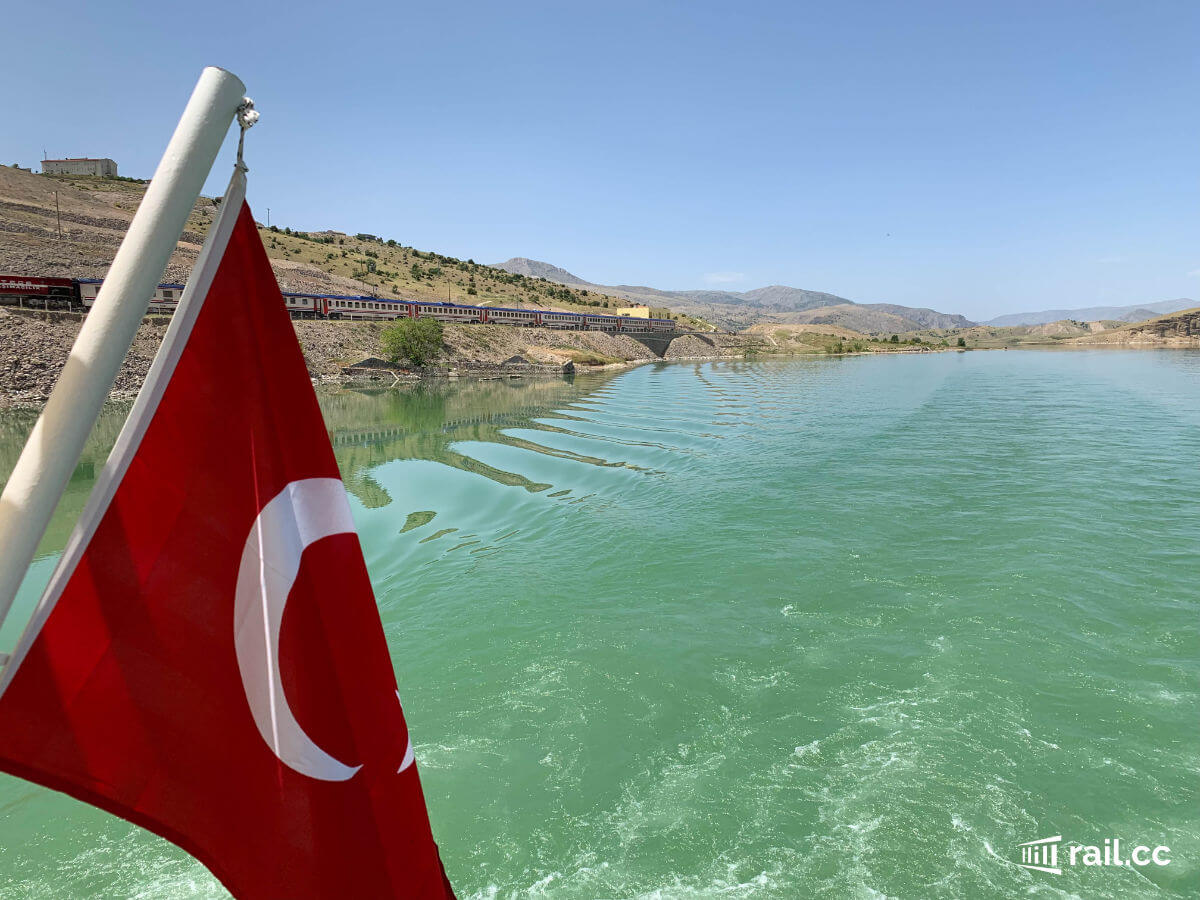
The Doğu Ekspressi (Eastern Express) departs from Ankara and terminates at Kars. On the way, it passes through some of the most beautiful destinations in Turkey. No matter the season, the views from the window are always stunning and highly recommended if you are seeking an alternative experience of the country.
And while we know that a flight would certainly be much quicker, the point of rail travel is the nostalgia of the travel experience and corners of the country that you would have otherwise missed.
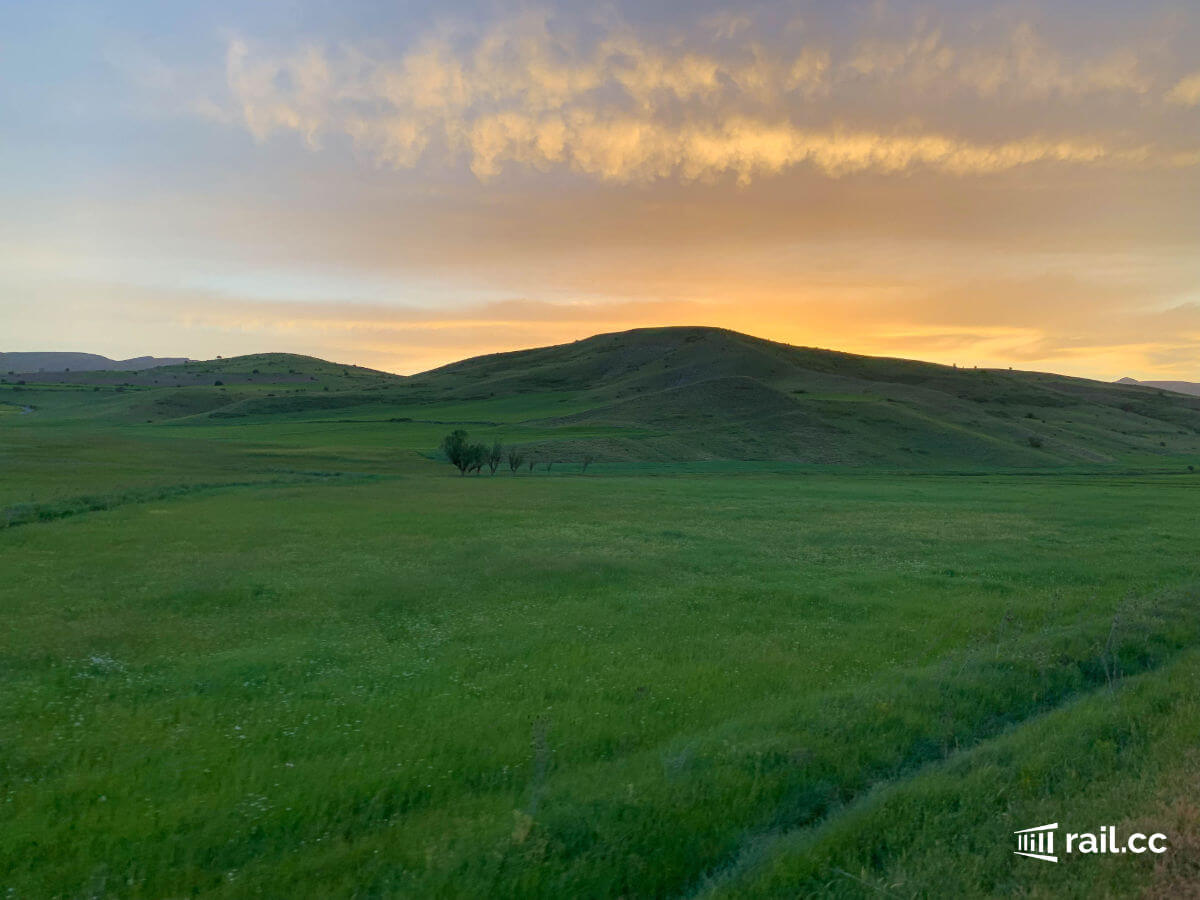
In May 2019, TCDD (Turkish State Railways) have launched the all-sleeping-car Turistik Doğu Ekspressi which replaces the sleeping cars of the original Doğu Ekspressi with couchette cars. The only difference between the new and the original service is that the former departs three times per week while the latter leaves from Ankara daily. It also features a restaurant car and stops briefly at various locations along the way for excursions off-the train. The scenery, though, remains the same no matter which train you choose.
Are you interested in taking one of Turkey’s slowest yet majestic trains? Then keep reading as this post offers essential tips you need to know before traveling on this route.
Departing from Ankara
Ankara railway station is the main railway station of the Turkish capital and is a major transportation hub within the city. The station serves as the eastern terminus of the Istanbul-Ankara railway corridor, as well as the easternmost station in Turkey with high-speed rail service. Ankara station is also a hub for YHT high-speed trains.
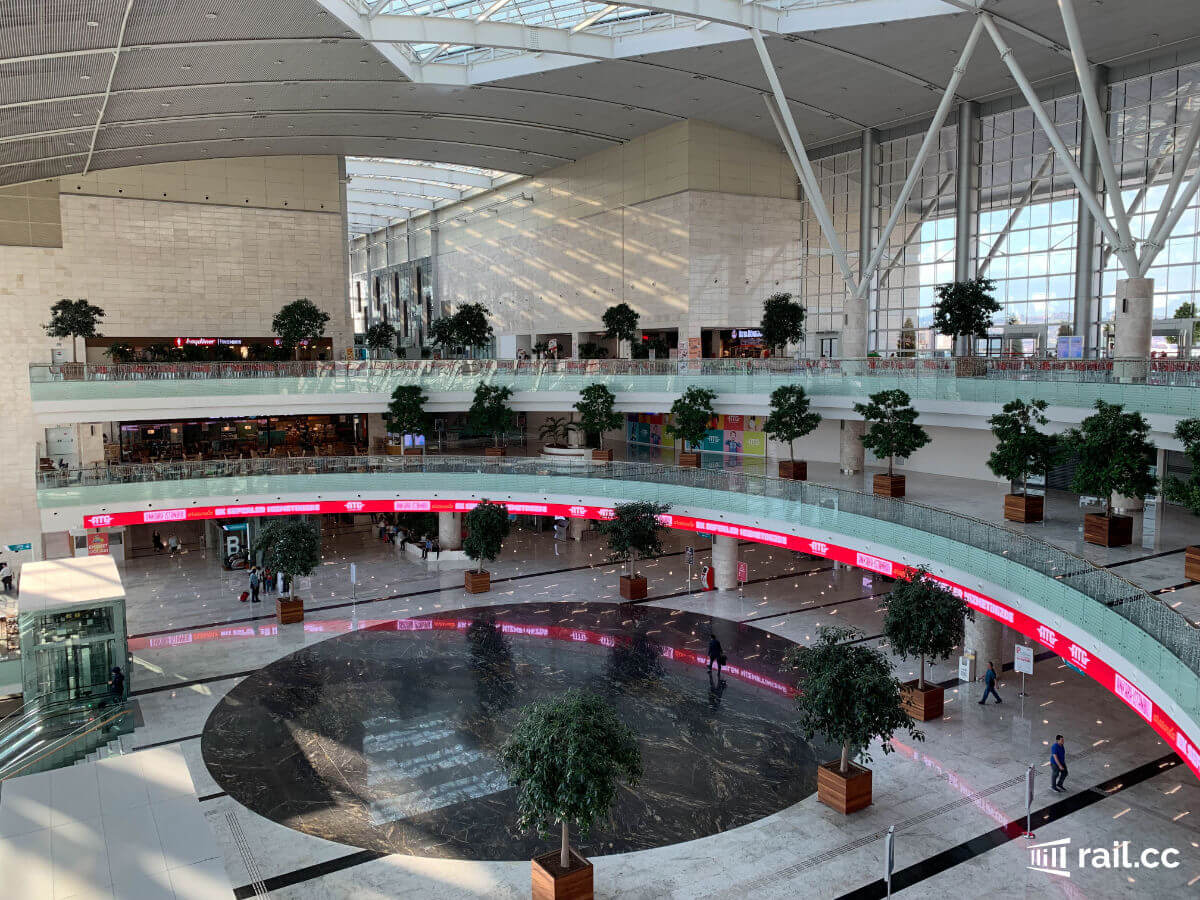
Located within the historic Ulus quarter, the station is a landmark of the city. In 2016, a new building was opened above the YHT platforms known as Ankara Tren Garı (ATG). The ATG building serves as a hub for high-speed rail with its own concourse containing information and tickets booths, waiting rooms and a VIP lounge, and is connected to the rest of the station via a skybridge.
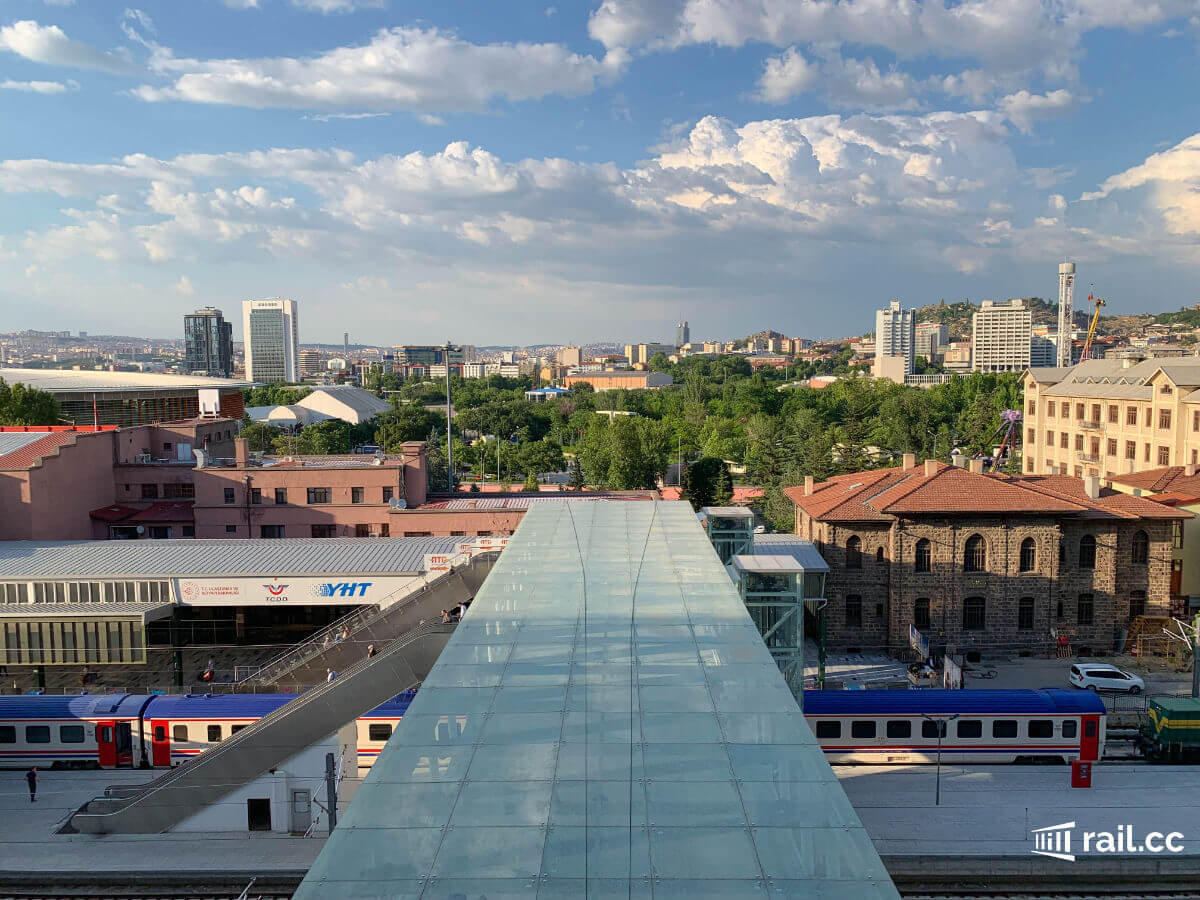
If you are getting one of the Doğu Express trains, then it is highly likely that your train will be waiting for you at Platform 1. However, always check the departure screens at the station to make sure.
The original Doğu Express departs at 18.00 daily while the Turistik one departs at 19:55. Either way, this gives you plenty of time to get on board and settle in your compartment.
This post covers the Turistik Express.
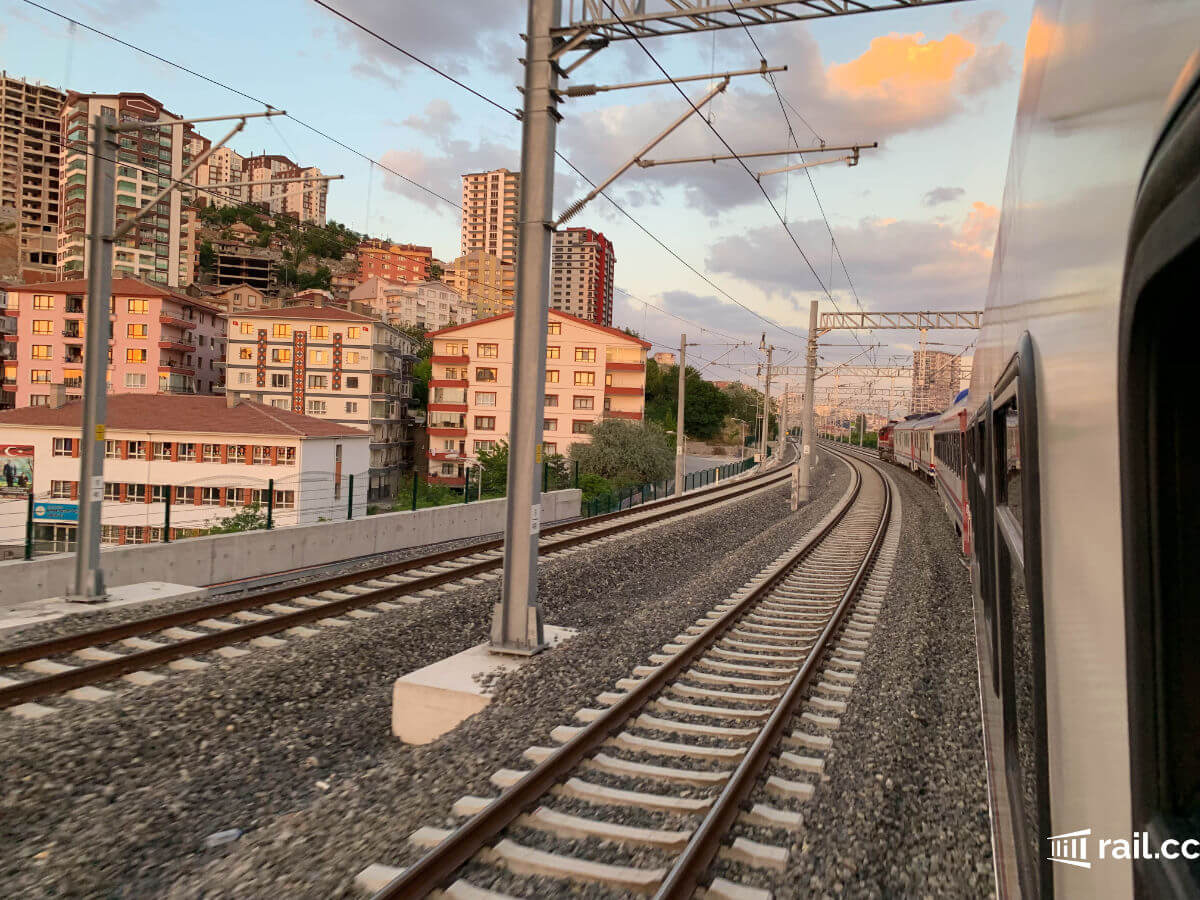
Sleeping car (yataklı vagon)
Each compartment in a sleeping car (yataklı vagon) converts to sleep two people. There is a sink with running hot/cold water, a tiny towel and bar of soap, mirror, clothes hangers, luggage rack, small cabinet, window to the outside, heating or air conditioning, and a waste receptacle.

The 220-volt low-amperage electrical outlet over the sink is designed for electric shavers. You can plug-in your mobile phone but it may cut off after a while. Just unplug your device, wait a minute, and plug it in again, and it should work.
The TCV2000 sleeping cars have small mini-bar refrigerators for drinks and snacks in each compartment, with a complimentary bottle of water and a few snacks.
The berths have comfortable firm mattresses, sheets, blankets and pillows. A movable ladder gives access to the upper berth. Each sleeping car has its own steward who makes the beds in the evening, converts them to seats in the morning and brings drinks and snacks to passengers in the compartments.
There are toilets at each end of each sleeping car and a shower.
Unlike couchettes or passenger cars, sleeping compartments are private and can be locked by their occupants.
The route
Eastern Anatolia boasts a wide range of varying landscapes. For the most part, the route stretches along the river Euphrates forcing its way through craggy mountains as we trundle through tunnel after tunnel.
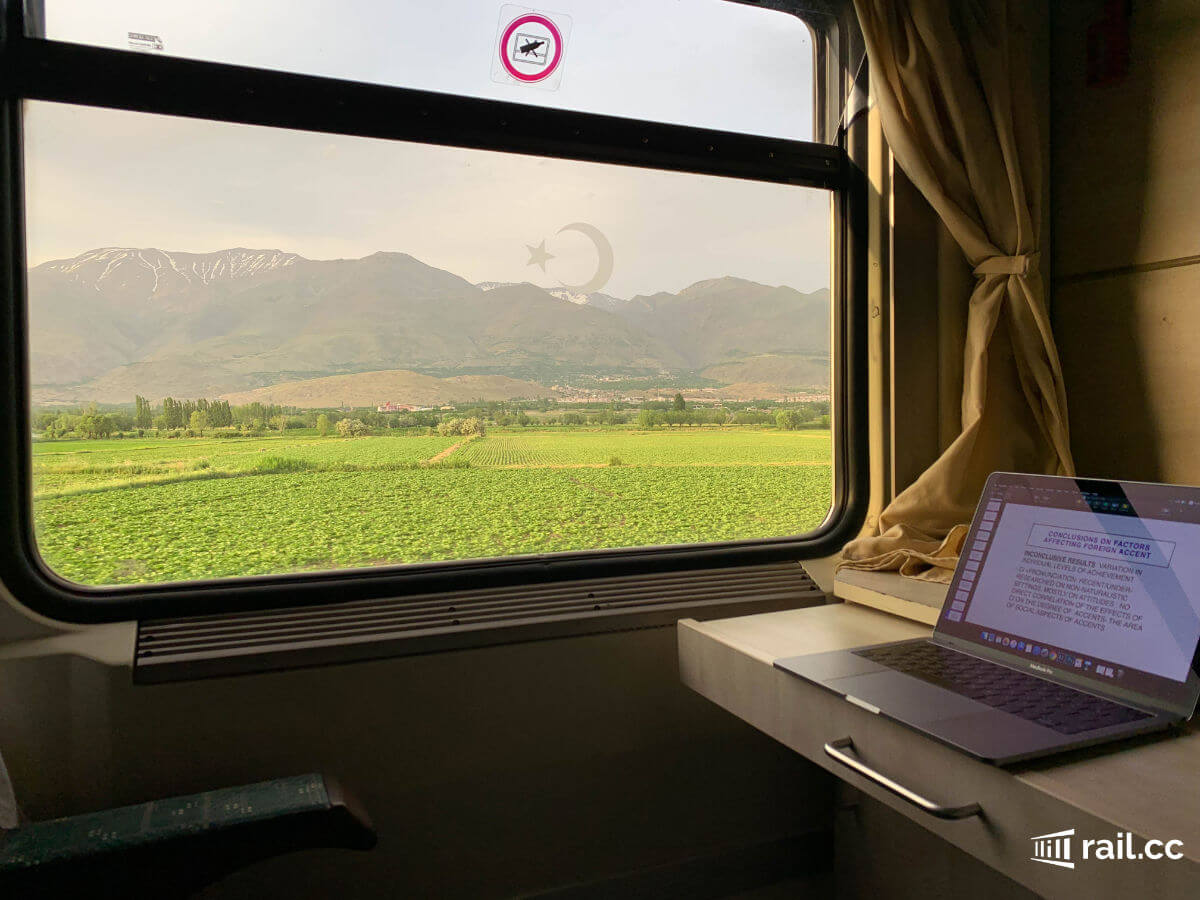
The landscape and the weather changes back and forth – sometimes it’s alpine-like mountain greenery. Other times, it feels like you are travelling through almost baron highlands. One of the most striking features, though, is that you almost don’t see any building for miles and miles. This part of the country appears so vast, remote and wild.The further East you get, the more remote it seems.
Stops along the way include Kayseri, Sivas, Divriği, Erzincan, Palandöken, Erzurum, Hasankale, Horasan, Sarıkamış and Kars.
If you take the Turistik Doğu Express you will make several stops along the way for short excursion. For example, we stopped in the middle of nowhere, at a town named İliç where we were taken off the train on a ferry tour across a nearby lake. At the time, no the conductors knocked our door and let us know in bad English that we had to go off the train. When asked to specify why or for how long he was unable to provide us with an answer.
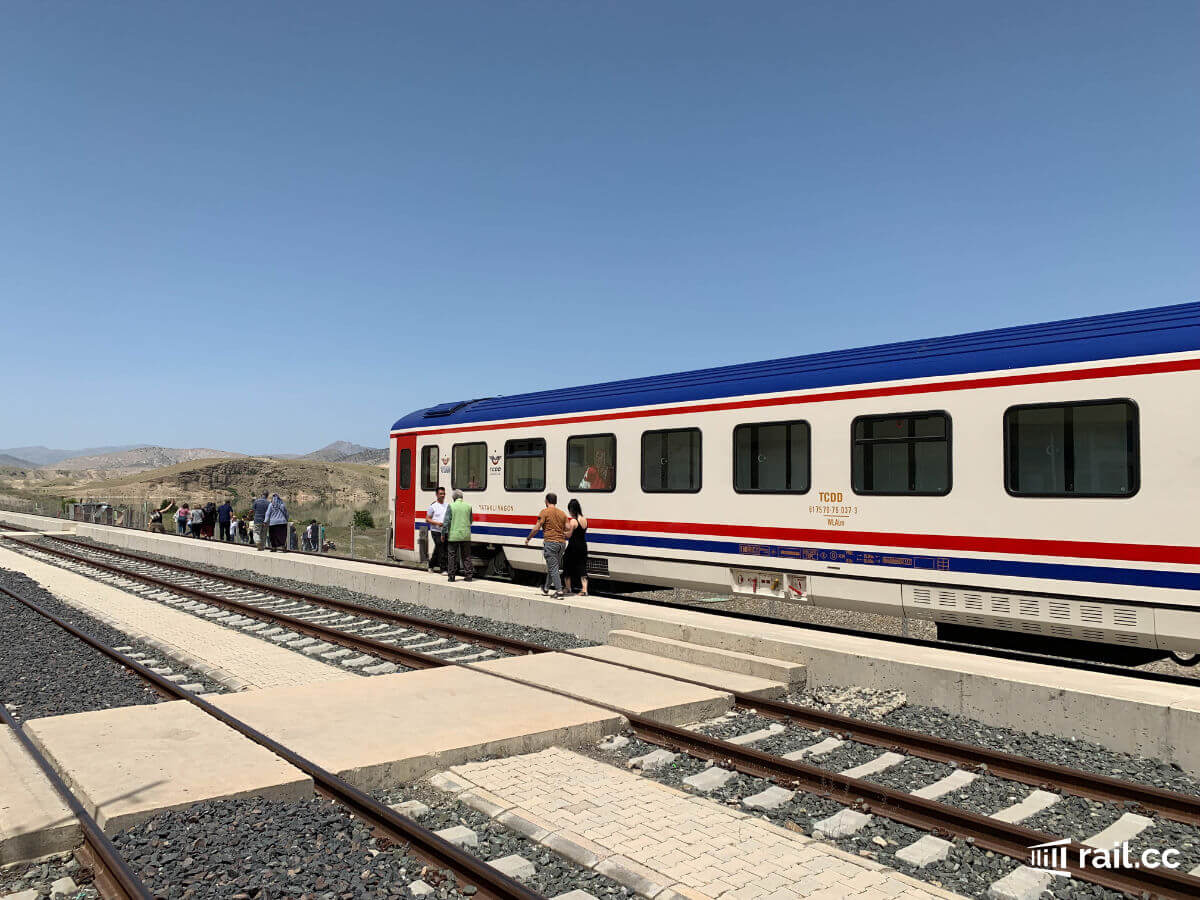
One of the things about travelling on this route is that almost no one speaks English. Even members of staff. Although reluctant, we got off the train and just followed the rest of the passengers. Nobody seemed to carry their belongings with them so we just left ours at our compartment and locked the door. We got on the ferry and were caught by surprise. There was a complimentary lunch buffet set for everyone on the small deck. There was even a chef serving the food and Turkish music.

This is a great opportunity to socialise with your fellow passengers. Most of them may not speak English but they are very willing to interact. The mere fact that a tourist this far away from home is visiting the remotest part of their country immediately sparks their curiosity.
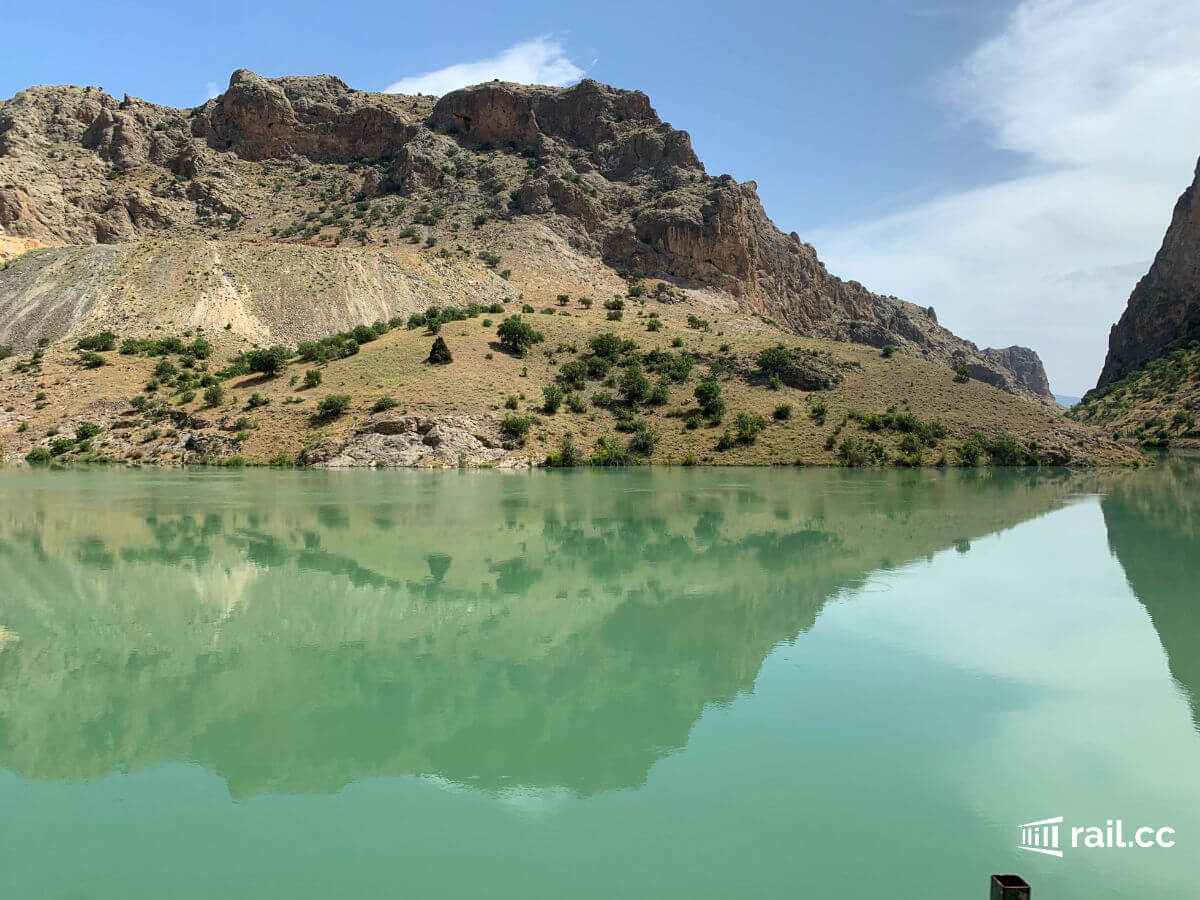
We had a great time on board and after 2 hours we returned to the train to be greeted by members of staff cheerily. One of them had even gone fishing while we were away and was now showing off his haul to everyone!
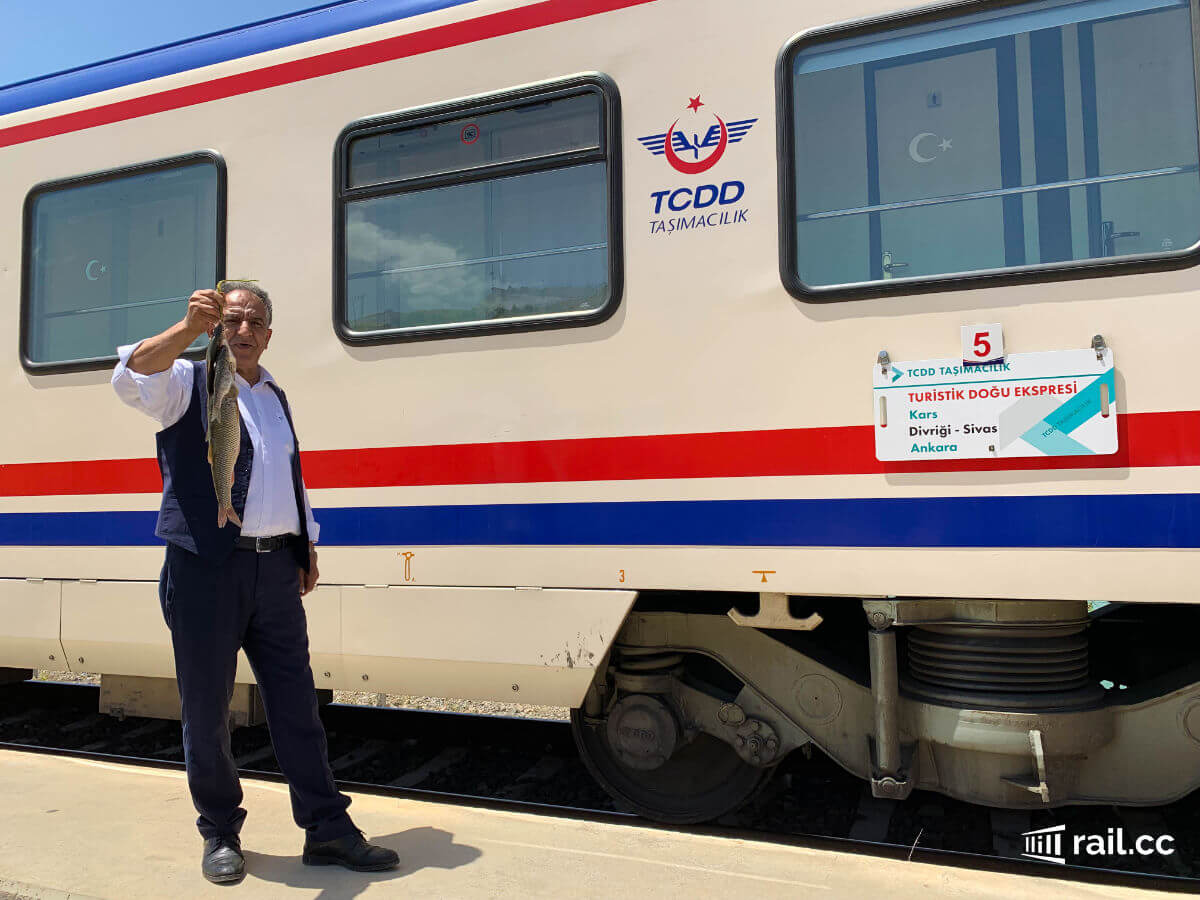
The train also stops at Erzurum where you can opt for another 2-hour excursion. A shuttle bus normally waits for you outside the station and gives you a ride to the city centre. Unfortunately, we were unable to participate since when our steward knocked our door holding a piece of paper and asking us something in Turkish, he was unable to explain to us what was going on in English. We later found out that this is how you can let them know that you want to take part to the excursion. All they do is write down your name on the piece of paper in order to have a clearer picture of who is coming and who is staying on the train.
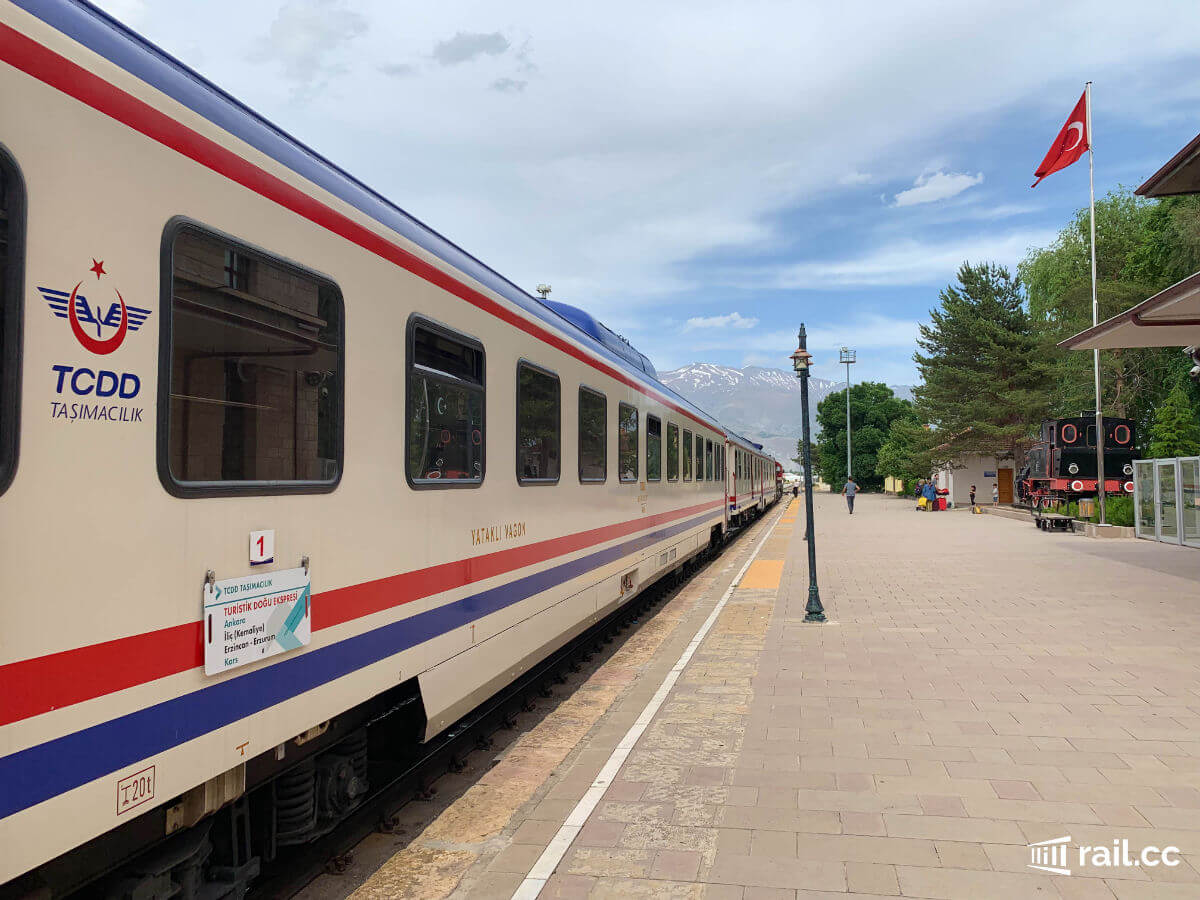
Finally the train arrives in Kars.
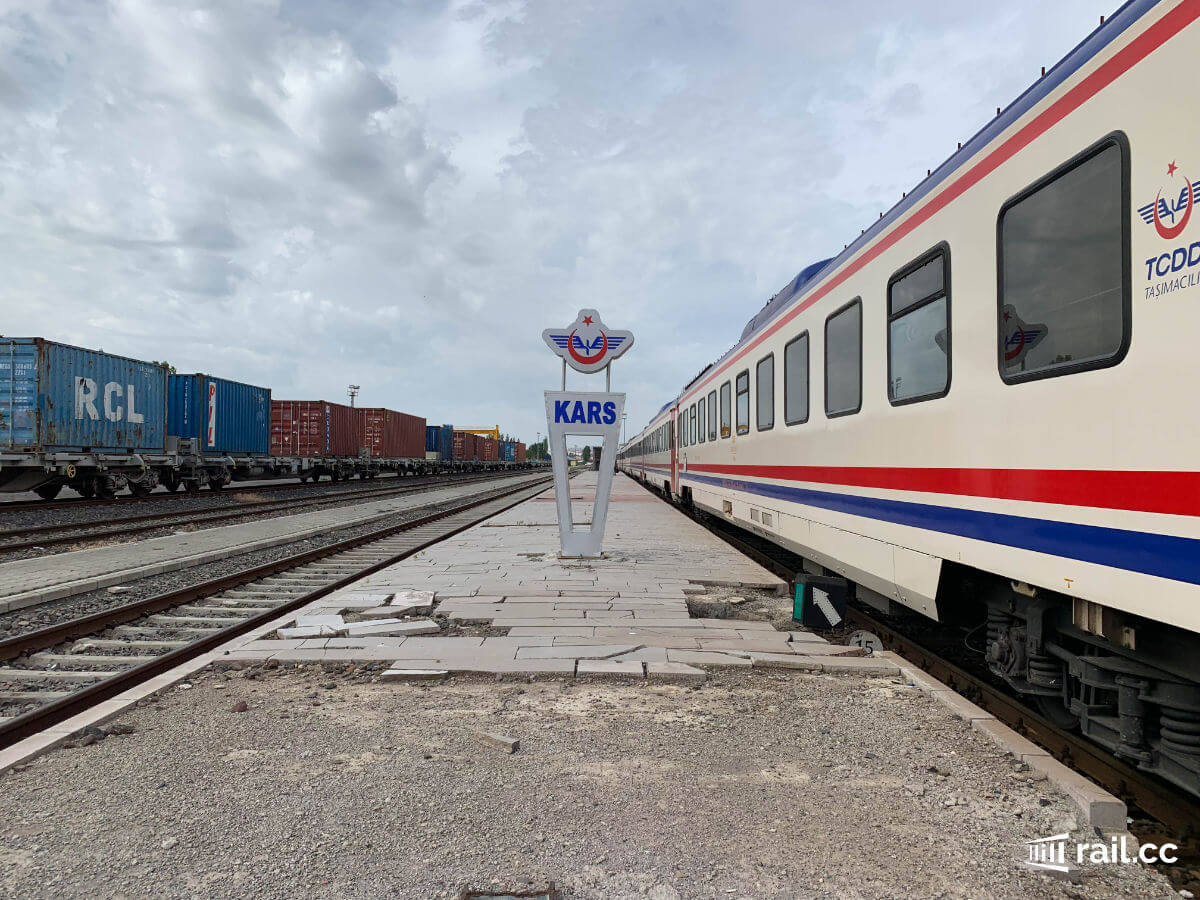
What to bring along?
This is a long trip. Given that you will spending at least 24-32 hours on this train it will be useful to pack some essentials with you. You can bring snacks and drinks on board. Bear in mind that each compartment has its own small fridge which really comes in handy in these kilnd of situations. There is also a restaurant car with great food at very reasonable prices.
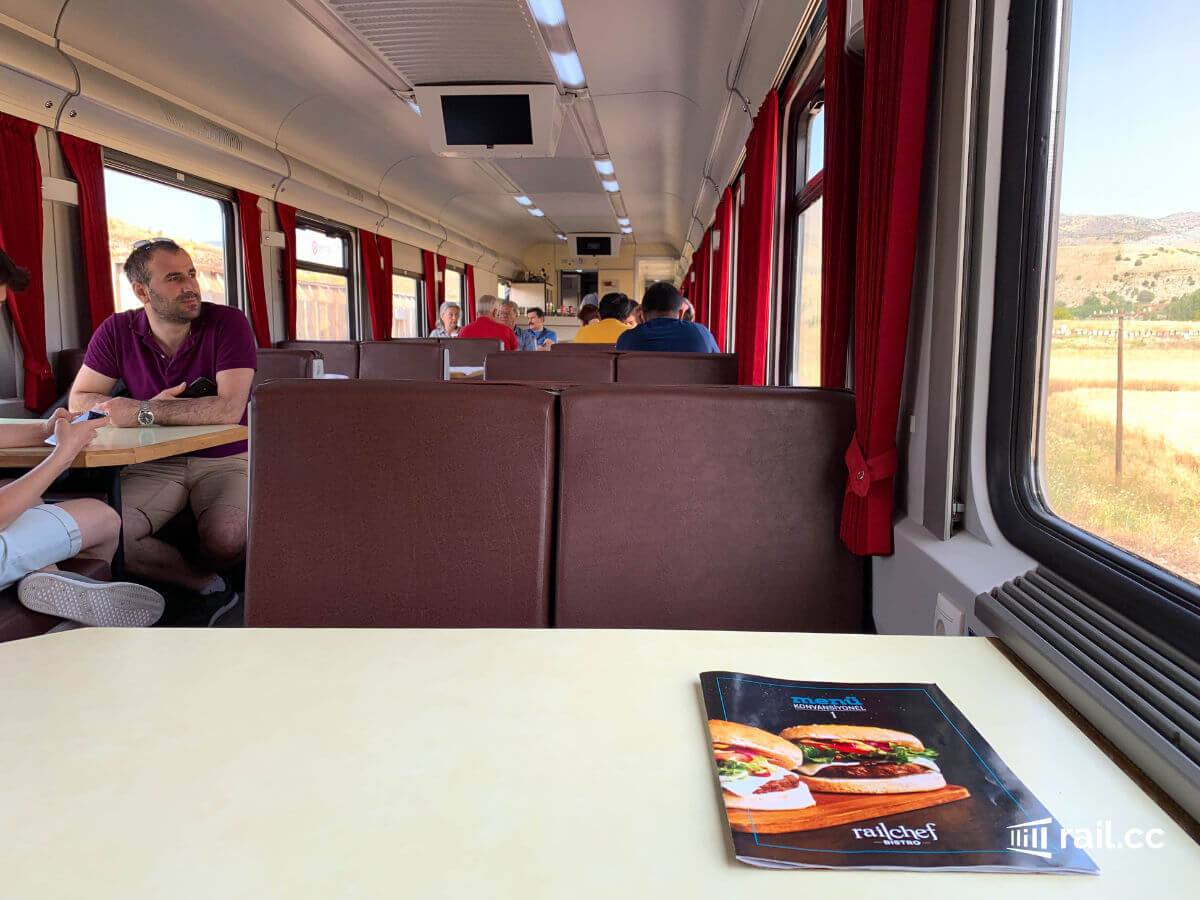
If you like reading, it would be a good idea to bring along a couple of books etc. Tech lovers will have a hard time since there is no wifi on board and for the most part of the trip there is no good 3G/4G connection either. So spend sometime beforehand download your favourite movies or music on your device before boarding the train.
How to buy tickets?
You can buy your tickets directly from TCDD’s website.
For the original Dogu Express, one way per adult is
TL 39 for a pullman reclining seat TL 52 for a couchette in 4 berth For the Turistik Dogu Express the price is TL 400.
Return tickets cost 20% less than two one-way fares. Children under 8 go for free, children 8-11 travel for 50% the adult fare while children 12 & over pay the youth (genç) fare. Youths under 26 get 20% off (genç). Seniors 60-64 get 20% off (yaş 60-64), over 65s get 50% off (yaş 65).
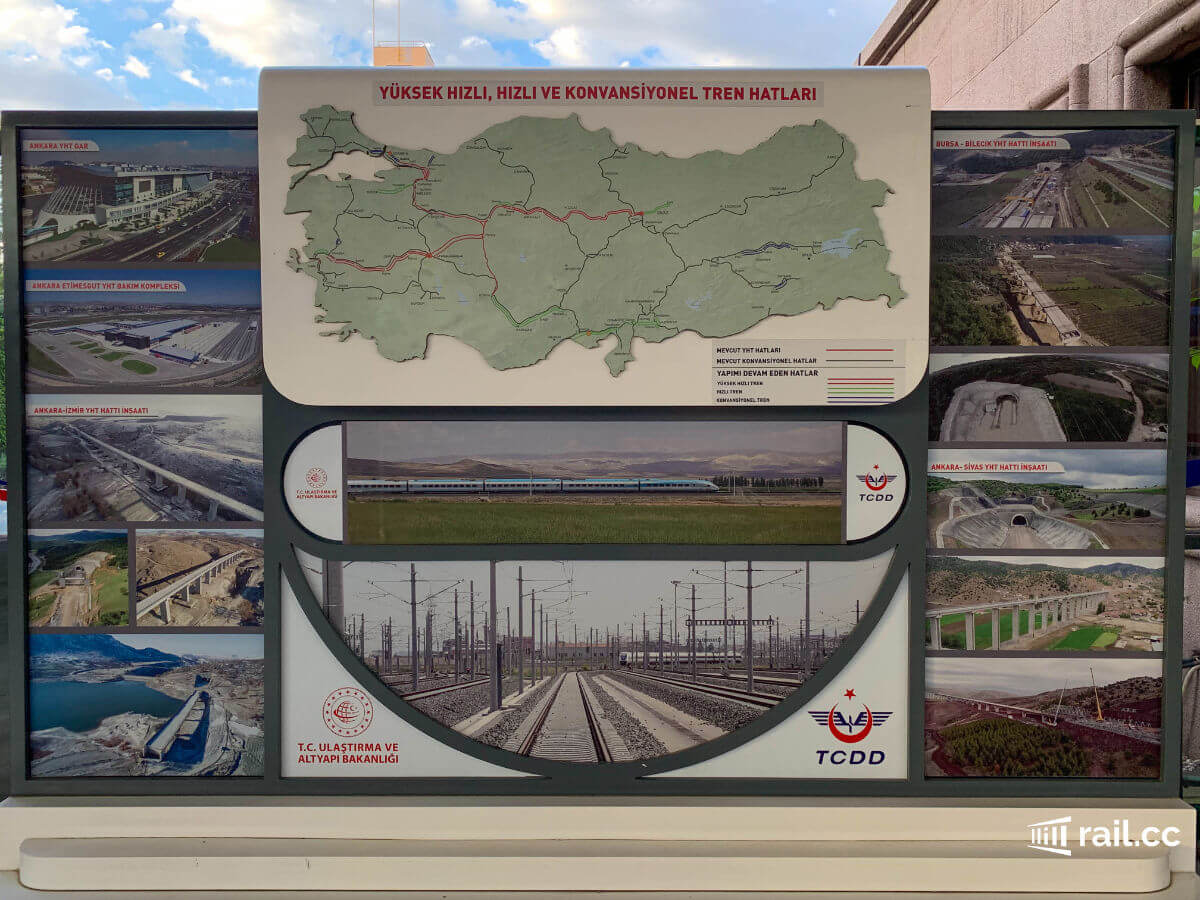
How to choose your seat?
The original Dogu Express has two different classes. The cheapest are the SV2000 reclining Pullman seats. It’s a long journey though and we recommend a sleeper. The SV2000 couchettes are in our opinion the best value for money with comfortable 4 bed compartments.
The Turistik Dogu Express comes with sleeping compartments only.
Verdict
Overall, it has been one of the most original and adventurous trips we have ever been on. The spontaneity as well as the feeling of the unknown -in a good sense- was what made this trip special. I must say, though, the best time to travel on this route is winter or late autumn, as the snow covered landscape makes everything seem more magical. However, the service runs all year long.
If you have any questions please feel free to drop us a line on our forum.
Thanks so much for reading this trip review! :)
👁 34501

